Hopefully this will help you make some choices about kit you choose for your adventures.
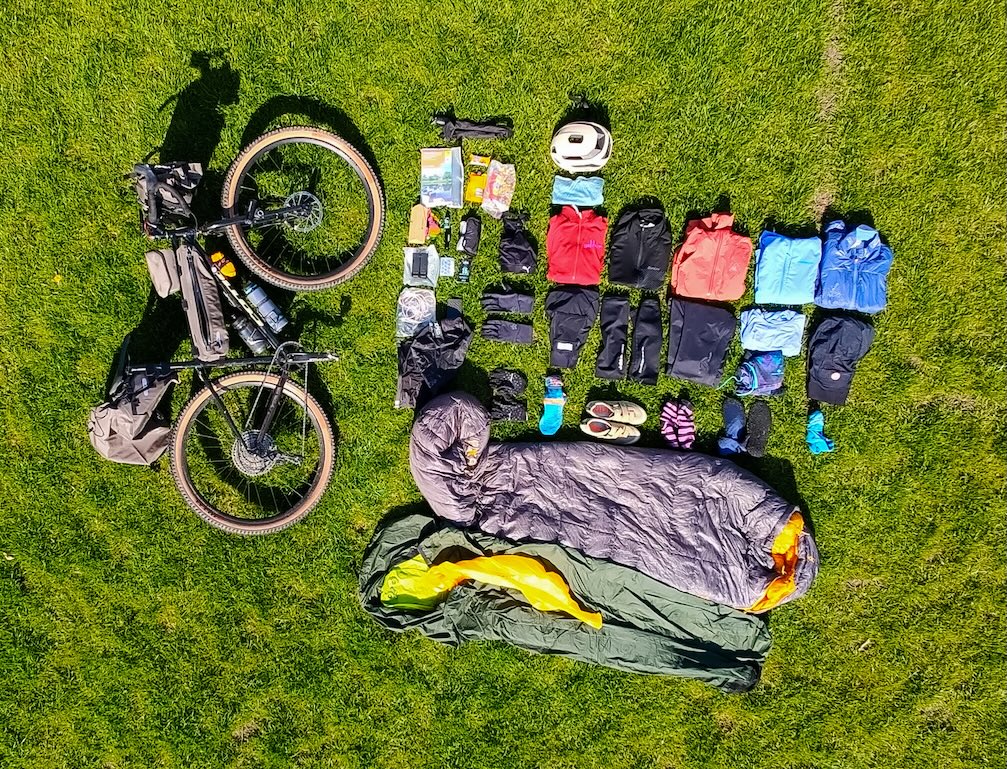
In the current issue of Singletrack Magazine, full members can read my ‘Free Time‘ story of taking on a solo bivvy two dayer along the Pennine Bridleway. This is a round up of the gear I took, and whether it worked out to be the right choices.
Wearing:
- Castelli Unlimited Cargo Women’s Bib Shorts
- Galibier Female Roubaix Merino Jersey
- Santini Women’s Guard Nimbus Rain gilet
- Fox Ranger Fire gloves
- Sidi Asper Velcro shoes
- Bridgedale socks
- DHB knee sleeves
- Puma bra
- Polar H10 HRM
- Polar Vantage 3 watch
- 100% Altis helmet
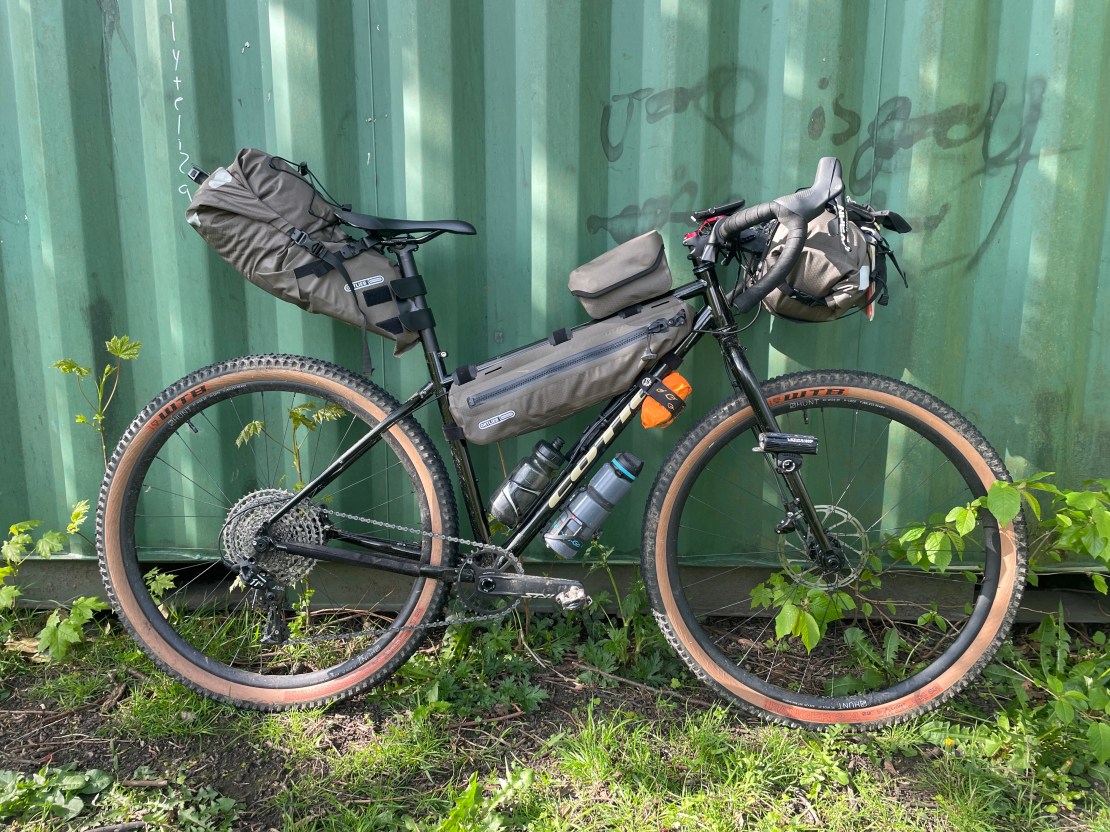
Ortlieb Seat Pack 16.5l with:
- Moon rear light
- Alpkit Hunka XL Bivvy
- Exped Ultra 5R mat & Schnozzel
- Dakine Women’s Covert gloves
- Dexshell bamboo waterproof socks
- Skinners 2.0 Compression sock shoes
- Patagonia Women’s Nano-Air Ultralight jacket
- Castelli Unlimited 2 Women’s Puffy jacket
- 7Mesh Co-pilot waterproof jacket
- Rab Cinder waterproof trousers
- Sunglasses and contact lenses
Emergency Kit (in a Camelbak tool roll):
- Nixit & Wipes
- Tick tweezers
- Space blanket
- Sanitary towel
- Chamois cream
- Cable ties
- Quick Link
Ortlieb Handlebar Pack-Flex with:
- Exped Ultra 5 sleeping bag
- Sleeping kit/spare clothes:
- 7mesh Elevate Long Sleeve Bike T-Shirt
- Ronhill Leggings
- Socks
- Albion Women’s ABR1 Pocket BibShorts
- Buff Merino Lightweight
- OS Map OL2
Ortlieb Frame-Pack Top Tube 4l with:
- Nitecore NB20000 GEN 3 Battery Pack
- Hover Cam batteries
- Charging Cables
- Snacks
- Ibuprofen
- Sunscreen sample
- Pot of hydration mix
- Wolf Tooth chain lube
- WTB tubeless repair
Ortlieb Fuel Pack with:
- Hover Air X1 Pro Max flying camera
- Wallet
On bike (Cotic Cascade):
- Nukeproof stem Garmin mount
- Coros Dura computer
- Timber Bell
- Fidlock phone mount
- Old Man Mountain adapter
- Lezyne 1800+ front light
- Hiplok Spin lock
- Bottle cage – in frame
- Bottle for hydration mix
- Elite Struka Microadjust bottle cage
- Water-To-Go Eco 75cl Active bottle
- Singletrack Rock Band
- Workshop gloves & inner tube
- One Up Pump and EDC
- Fizik Saddle
Forgot to pack – doh!
- Lip balm
- Pen knife
- 3-pin USB adaptor
And here’s a bit more about each and every item…
Wearing – Day 1

Castelli Unlimited Cargo Women’s Bib Shorts
Latest Singletrack Merch
Buying and wearing our sustainable merch is another great way to support Singletrack
I set out with these on day 1 having worn them plenty before. I know they’re comfortable and they’re reasonably easy to pee from. It’s a bit of a gymnastic effort, but achievable. It’s a bit depressing that I’m a size XL in them, but so it goes. The thigh pockets were really useful – I used one for easy access to my phone and the other for stuffing used snack wrappers.
Galibier Female Roubaix Merino Jersey
This arrived at the office just before I was setting off. It was super soft on the inside – it’s bamboo on the inside and merino on the outside – and not at all itchy, so I decided last minute to wear it. The rear pockets were really handy for carrying layers and purchases when I didn’t want to stop to put them in the packs. I ended up sleeping in it too, and wearing it on the second day… It was just the right item for the temperatures – layered up nicely when it got cold, but breathable when the sun came out.
Santini Women’s Guard Nimbus Rain gilet
I love this gilet because it’s so light and packs down into almost nothing, yet is incredibly warm. Coupled with the merino jersey, this was the perfect layering for the first day, until the sun really came out. As the win turned really cold on the second day, I squeezed it over the jersey and Patagonia Nano Puff for added wind protection.
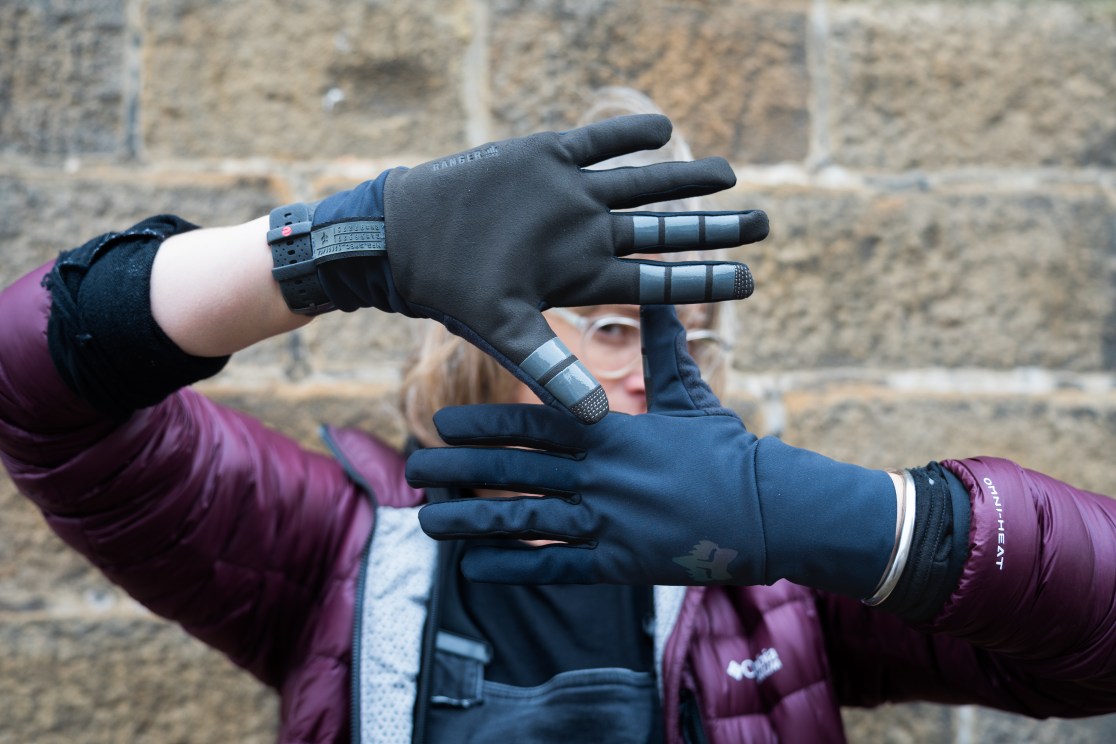
Fox Ranger Fire gloves
These were perfect for the cool start on the first day, and the whole of the much colder second day. They’re windproof. Not waterproof, but the windproofing does make them pretty tolerable once they get wet. The only thing is that once you get above 10 degrees or so they are too warm and rather sweaty. So, I was glad I took the Dakine gloves as the day heated up – and very glad to put the Fox gloves back on in the cold of the next morning.
Sidi Asper Velcro shoes
These are comfortable for pedalling in but I find the lack of fit adjustment limits their usefulness for off the bike walking. Luckily I didn’t have a whole lot of that to do. The first morning, on the long road section, I found my feet were really cold. Once I got to hopping on and off the bike for endless gates, my feet warmed up.
Bridgedale socks
Just super comfy socks. I did take a spare pair in case of wet feet, but I didn’t need them. I also changed into different socks overnight, to give my feet a rest, and also so I would have a bit of protection if I got up in the night.
DHB knee sleeves
I wore these (ancient) windproof knee sleeves partly to keep me warm and partly to protect my legs from chafing against the bags. I find I tend to brush frame packs, especially with my right knee, and I didn’t want to wear full riding trousers. This was a good compromise, but by the second day they were starting to slip a little, and by the end of the day the gripper was really painful on my thighs. I’d consider it a proof of concept, but would like to try some newer versions to see if they’re more comfortable.
Puma bra
A basic over-the-head style sports bra, deliberately chosen for its absence of any clasps or seams that might rub. Also full-cut enough that if miracles happened and it was really hot, I could ride or swim in it.
Polar H10 HRM
I decided to wear this because I’ve done a bunch of indoor training with it on and have come to find it quite useful as a guide to effort, especially in the sense of ‘does this really hurt, or is it all in my head?’. As it turned out, I never felt the need to check in on whether my head was out of the game, or if my body had clocked out too. I took it off to sleep in, but otherwise it was so comfortable I never even noticed I was wearing it.
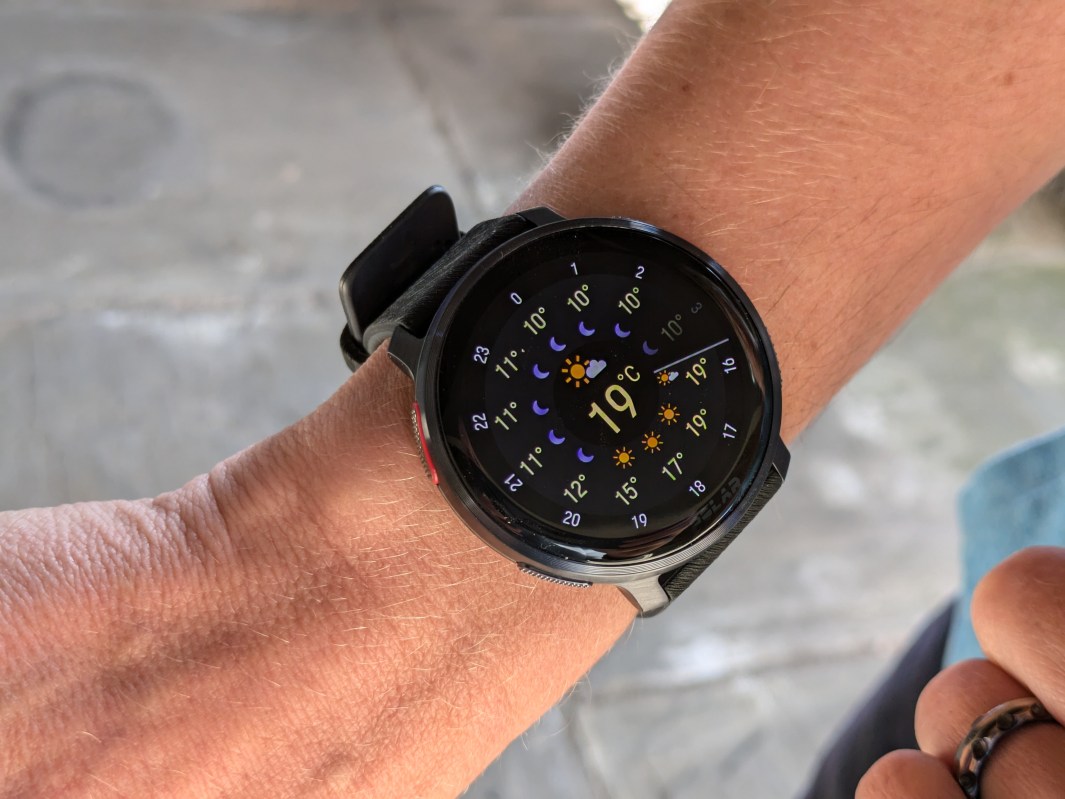
Polar Vantage 3 watch
I was using the Coros Dura bike computer to record my ride, and it also connects to the Polar HRM, so the watch was overkill. But I’m used to wearing it, so I did.
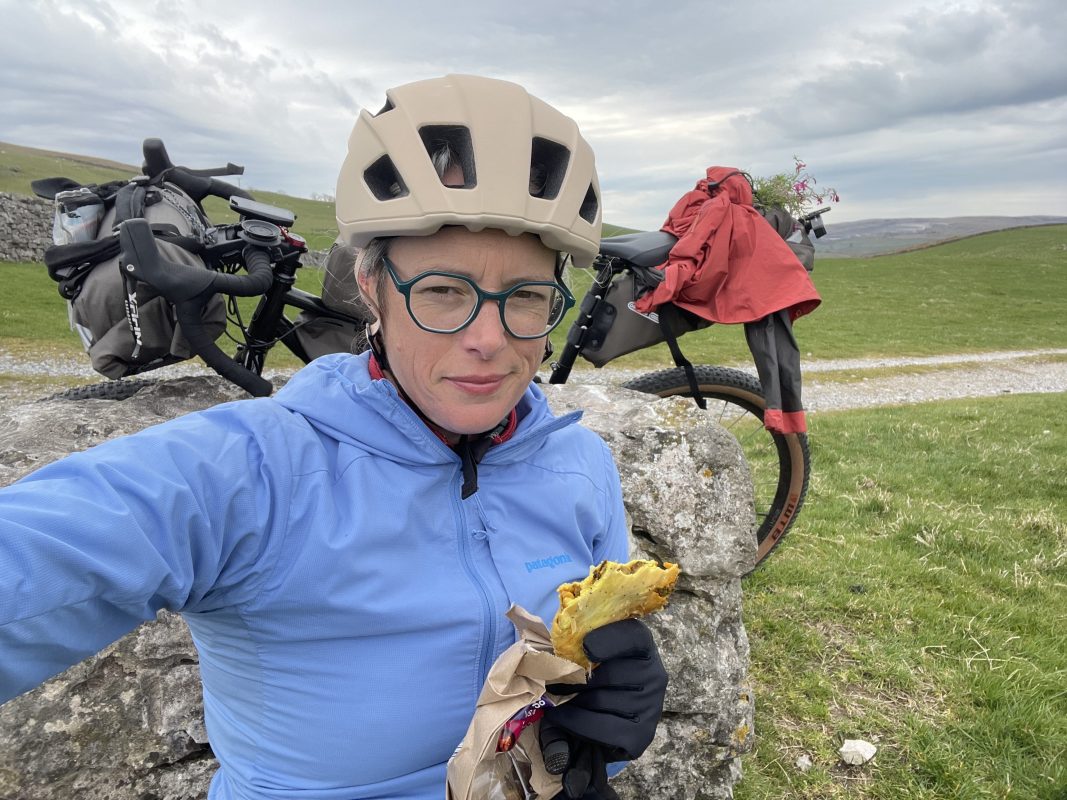
100% Altis gravel helmet
I put it on and I forget it’s there. Which is about as much as you want from a helmet, I think? I do find the chin strap needs re-tightening from time to time, but that’s no big deal. The cradle in the helmet adjusted easily to accommodate the cold wind additions of a buff and hood. I would have liked to add a helmet light for night time duties, but my helmet light mount didn’t fit with the vent layout. Something I’d want to resolve for longer night rides for sure.
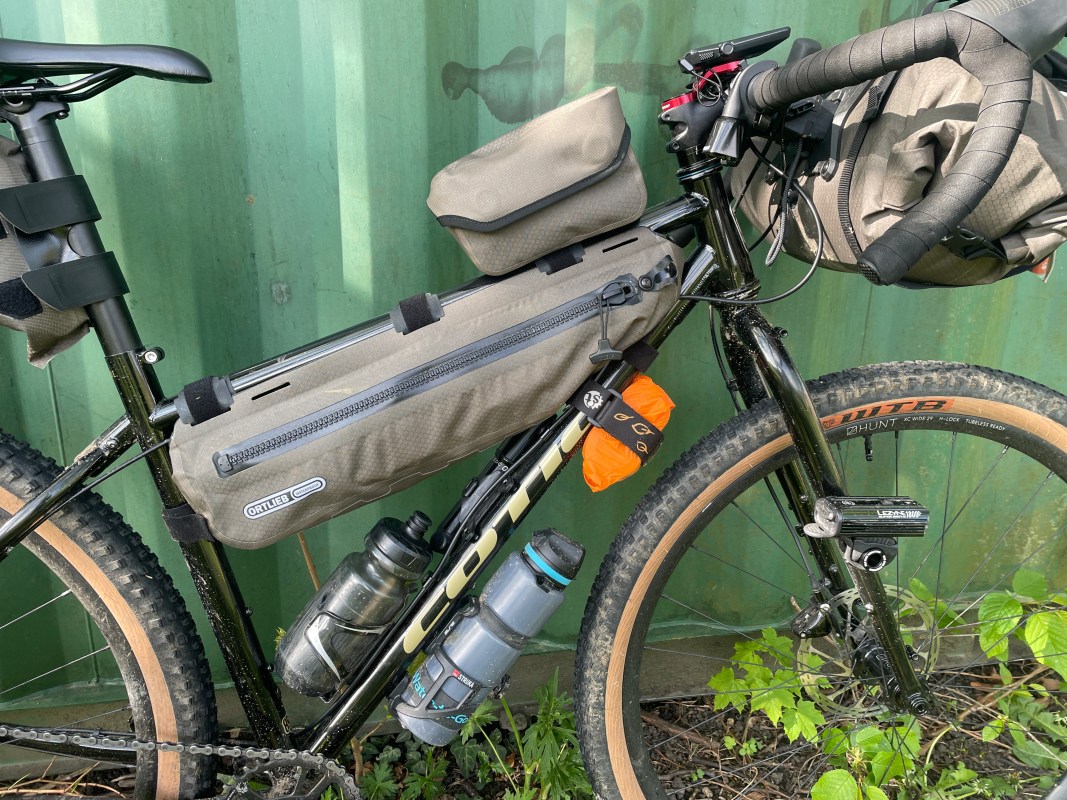
Ortlieb Frame-Pack Top Tube 4l
This frame pack just squeezed into the size medium frame I had, which was lucky as when I ordered the pack I didn’t know what bike I would be riding! There’s a smaller option if you want to keep space inside your frame for other things, or you have a smaller triangle. Possibly because it wasn’t stretched super tight in the frame, I found the zip too stiff to undo with one hand if I pulled it right up into the ‘locked and waterproof’ position. But since it didn’t rain on me this didn’t matter and I just left it ajar. This set up left me with room in my frame for a water bottle.
It’s one open space inside there, and I did find some things ended up a little jumbled together. Perhaps some net pouches or lightweight bags inside would be a handy addition. I tried to pack it with things I was likely to need during the day:
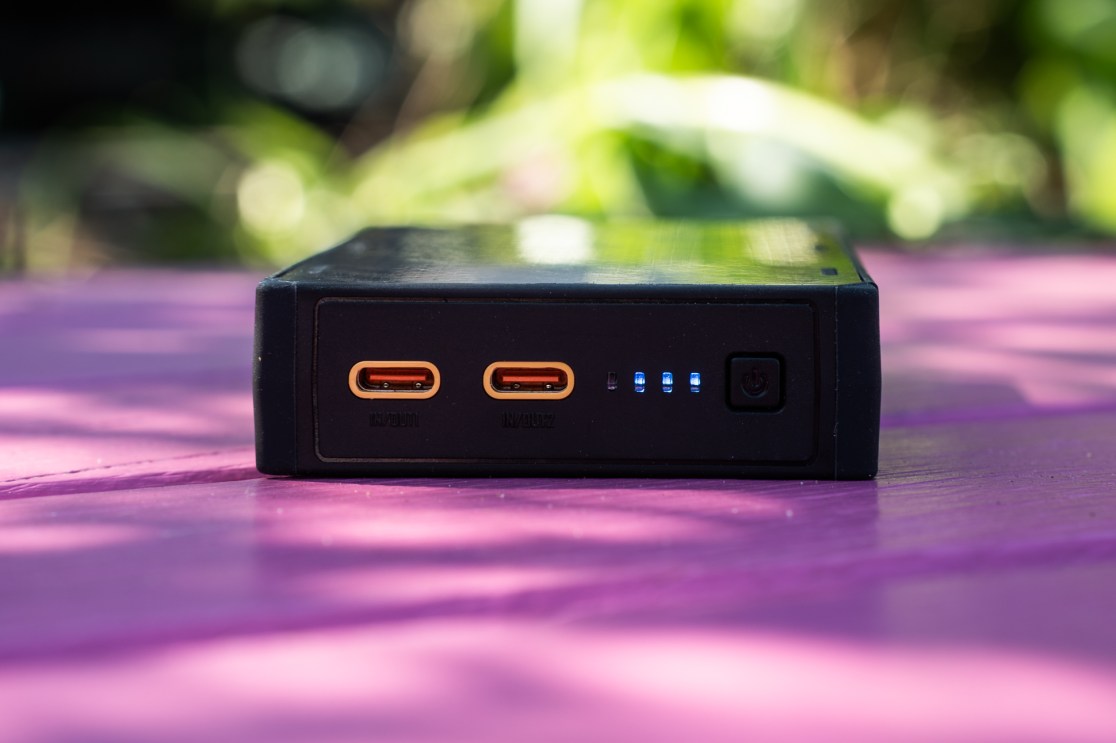
Nitecore NB20000 GEN 3 Battery Pack
I used this to charge my phone around three times I think, plus to recharge a battery on the hover cam – which I think was quite a thirsty item. It seems pretty light and small for all the power it can store, and the rubber edges give it an air of ruggedness. I didn’t sit inside anywhere to poach power, so was glad of having the charging pack, which still had power in it come my train ride home. I didn’t pack a 3-pin plug, so couldn’t have grabbed any power at cafes etc. A definite oversight, not to be repeated.
Hover Cam batteries & charger
There were two of these in a charger, which charges sequentially. It was quite a thirsty drain on the battery pack I think. If you’re only shooting for the fun of it and not because you’ve a job to do, I’d leave the charger at home and quit playing once you run out of batteries. Also, you’ll get more shooting time from three batteries if you don’t lodge the camera in a tree and have to wait for it to run out of battery to return to earth…
Charging Cables
I packed a multi-end cable out of paranoia that one of the other cables would break. Of course, the lightning end on the multi cable was broken, so it’s just as well the iPhone cable I packed was fine. Too many damned cables – if I was touring purely for pleasure, I’d have been less paranoid about the loss of charging cabability.
Snacks
I packed a few snacks from home, including a couple buried right in my saddlebag – the idea being I would always have those squirreled away if I really needed them. I made myself a zip-lock bag of trail mix from nuts, Japanese rice crackers, dried plums and sultanas, and M&Ms. I do really like trail mix – either in handfuls, or just pick out the bits you fancy when your tastebuds gang up on you.
Ibuprofen
I was pretty confident I would want this at some point so I didn’t bury it in my first aid kit. I took some at bed time, and on the train home. Overall, I did feel tired, but nothing felt injured.
Sun cream sample
I only had a little sachet of sun cream and my reluctance to open it and then have the rest of the packet oozing everywhere meant I didn’t actually open it. Probably my nose would have liked a spot. A little mini tube, or perhaps a stick, would be a better addition in future.
Pot of hydration mix & magnesium pill
I’ve realised that I really benefit from hydration mix instead of just water so I put a few hydration mix tabs of different flavours (so I wouldn’t get sick of them) in a small pot, along with a magnesium pill for bed time. I still got cramp in bed, but I managed to get rid of it without having to get up, so I’ll count that as a win.
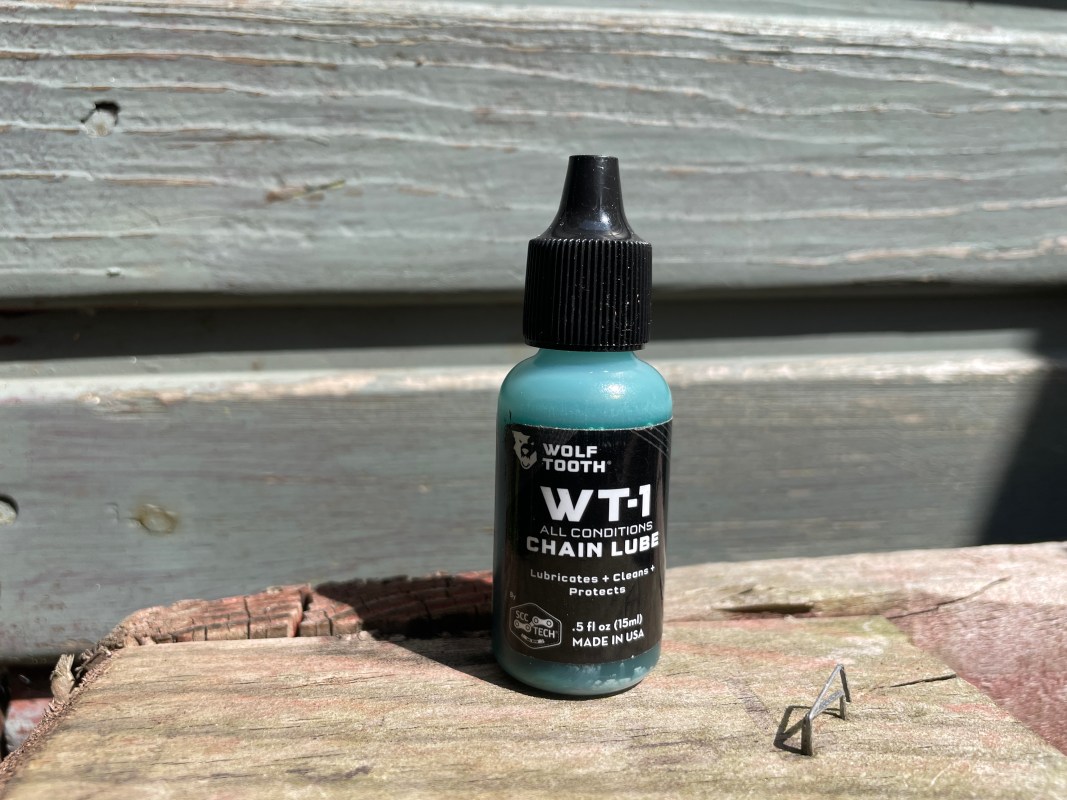
Wolf Tooth WT-1 chain lube
I didn’t need to reapply lube, but it was good to know I had the option. Squeaking and grinding get annoying really quickly.
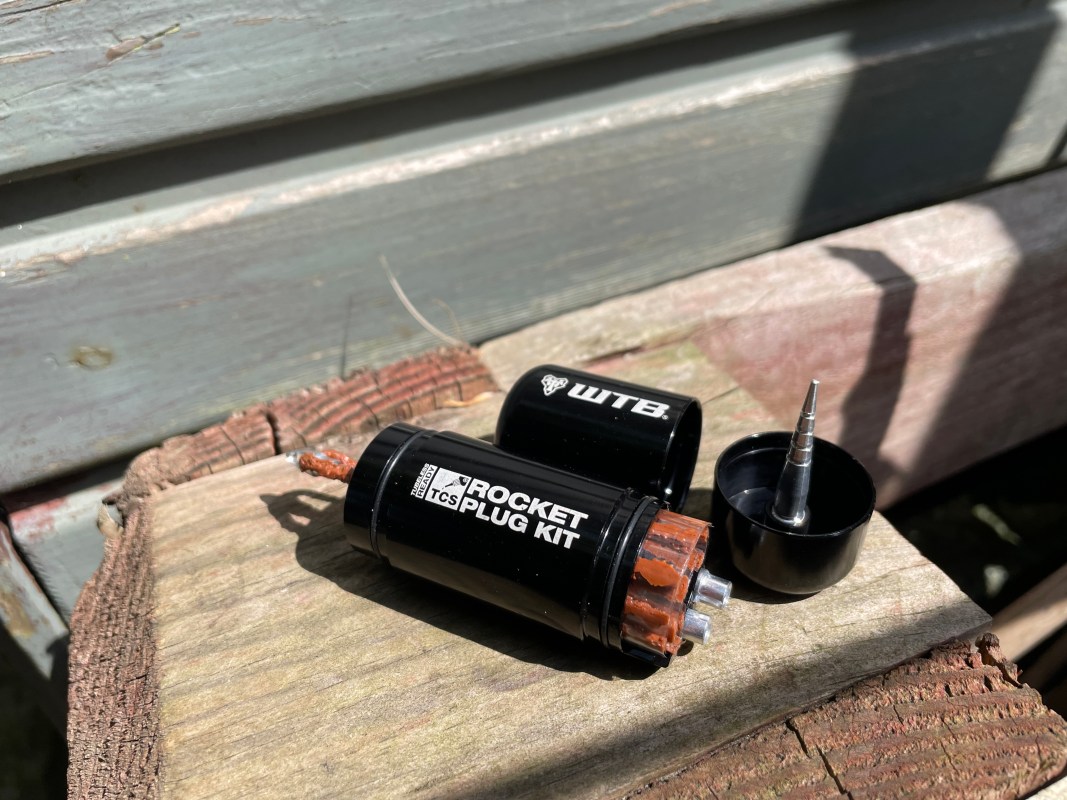
WTB Rocket Plug tubeless repair kit
I wanted to have quick access to my tubeless repair if it was needed, so kept this in my frame pack. What would be even better would be a tubeless kit to fit into my One Up pump. There’s a space there just waiting. And I find this WTB kit all a bit too fiddly and itty-bitty.
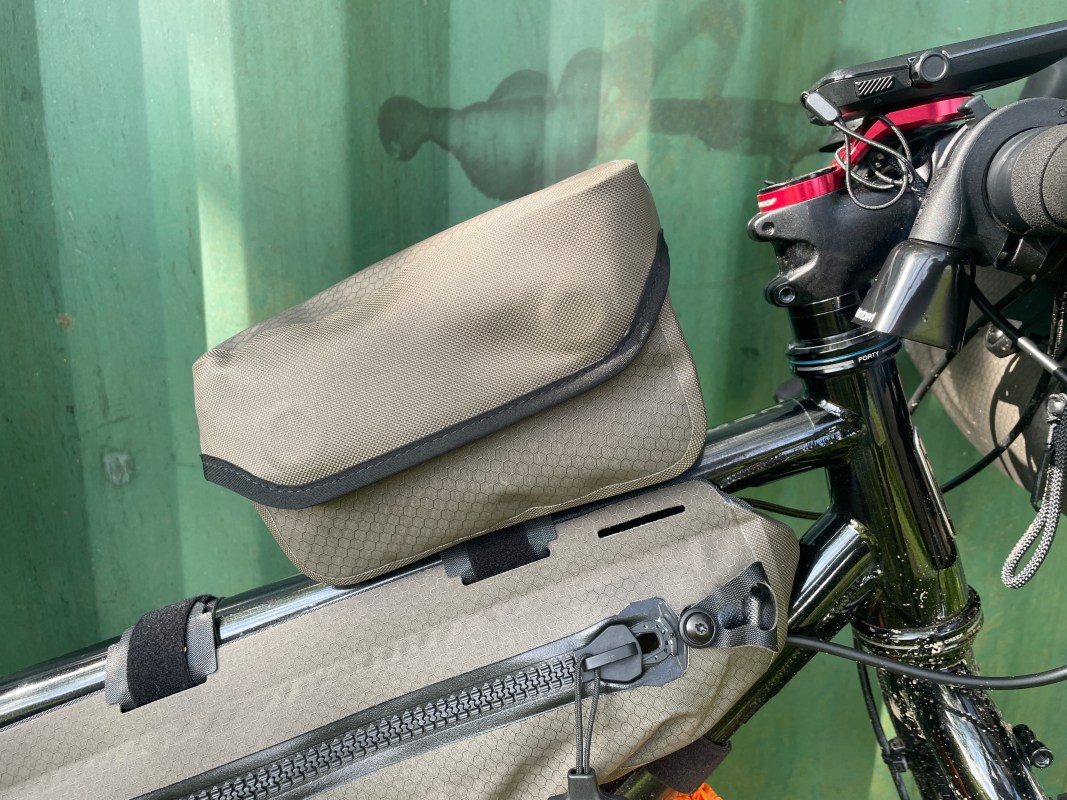
Ortlieb Fuel Pack
This sits on your top tube and attaches either to bolt-on mounts, or via a couple of straps. The lid is a sort of flap, which doesn’t completely hinge back. I suspect this helps keep it waterproof, although it does make access a little fiddlier as the lid wants to shut – which would be quite handy if you were grabbing food on the go. Fasteners on it are magnetic, which I liked a lot.
HoverAir X1 Pro Max flying camera
This is actually pretty easy to use, with easy settings adjustment from your phone. It did head up to do a bird’s eye view, run into a branch, and didn’t come back down again until the battery ran out. And it doesn’t like to fly in strong winds, of which I had a fair bit. But otherwise it was largely pretty fuss free. It slotted fairly neatly into the Fuel Pack, although I’d much rather have had it filled with some easy to access snacks.
Wallet
I didn’t take cooking equipment, so I knew I was going to be buying food on the go. Cafes and pubs a-go-go. So, cards at the ready. I had a few coins too, handy for honesty boxes and plant stalls, and a tenner, just in case. Also, I have a little multitool in my wallet, so I did have a little knife and saw I could have used for cable ties etc in the absence of a proper pen knife.
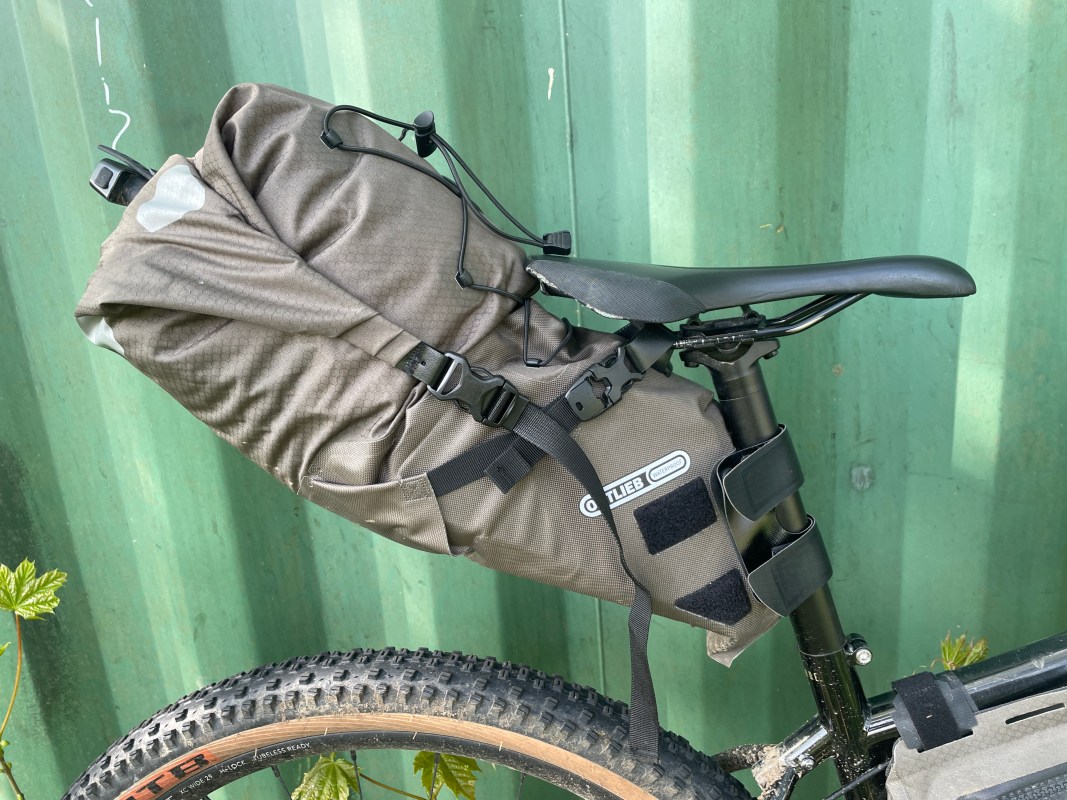
Ortlieb Seat Pack 16.5l
This attaches to your saddle rails and seatpost – so not suitable for if you have a dropper. Roll it up, use the valve to let out trapped air, roll it some more, tighten the straps, and then finally pop that valve in – I found this created a really tightly packed pack that didn’t waggle around, even on the roughest sections. I used the top elastic to strap extra bits and pieces when I was on the go and didn’t want to unpack the bag. It’s a bit of a procedure to get the pack compressed and waggle-free, so give some thought to what you put in there and in what order as you don’t want to be packing and unpacking too often.
I put my emergency kit right at the bottom – figuring that if I was facing a situation that needed it, I was probably not going to be going anywhere in a hurry and worrying about repacking the bag.
Emergency kit
I used a Camelbak tool roll to keep everything together. In it I had:
- Nix It & Wipes – for in case of an unscheduled period (not an uncommon event).
- Tick tweezers – for in case of unwelcome visitors
- Space blanket – probably unnecessary given I had a sleeping bag and bivvy bag with me, but it’s tiny, light, and gives me options if needed.
- Sanitary towel – more for use as a first aid dressing than anything else.
- Paracetamol – less likely to use than the ibuprofen, so I tucked it away
- Chamois cream – didn’t use, didn’t need it (had also applied Singletrack Salvation before setting off)
- Cable ties
- Quick Link
Next in the bottom of the seat pack were a couple of things I didn’t think I’d be needing on day 1, before I took my bedding roll out.
Dexshell bamboo waterproof socks
I ended up wearing these overnight to give my feet a change of scene, and also because it made going for a wee in the night with the dew on the ground much less uncomfortable. If it had been a rainy day, I’d have ridden in them.
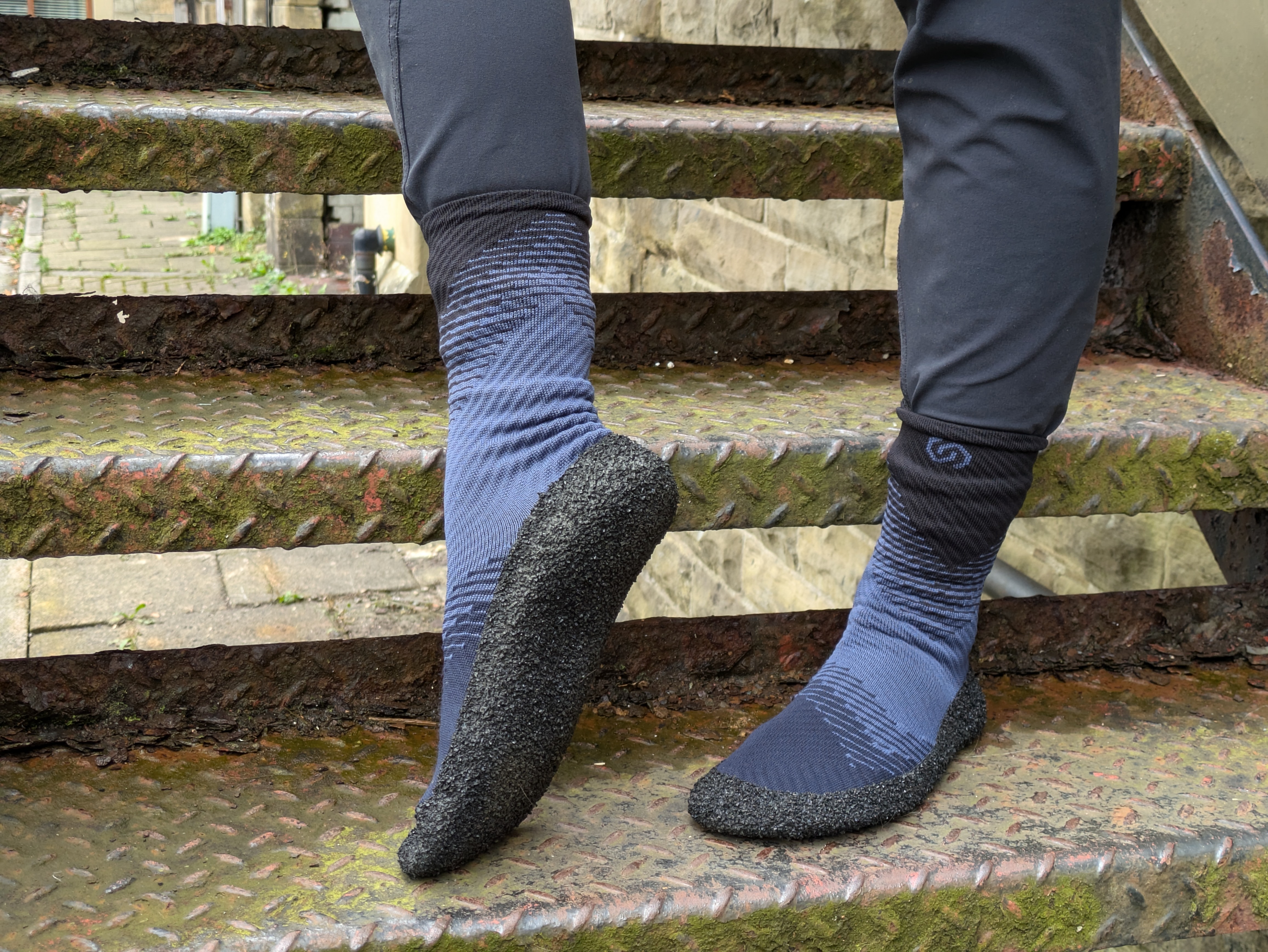
Skinners 2.0 Compression shoes
I was supposed to be wearing these in bed, but I forgot to unpack them from my bike before I got into my sleeping bag and then I couldn’t be bothered to get back up. More protective than just socks, my plan was to wear these if I got soaked and needed a change of clothes for the evening or train home. You wouldn’t want to walk miles in them, but as a lightweight alternative to flip-flops (and a lot more nettle-proof than flip-flops) I rather like them.
Castelli Unlimited 2 Women’s Puffy jacket
I could probably have done without this, but I packed it in case I wanted a warm dry layer and had soaked everything else. As it turned out, the Patagonia Nano Puff on its own would have been enough, but this is so small and lightweight I’d probably be tempted to pack it again if the weather looked ropey. It’s super cosy, windproof, and very light. Weirdly shiny looking though.
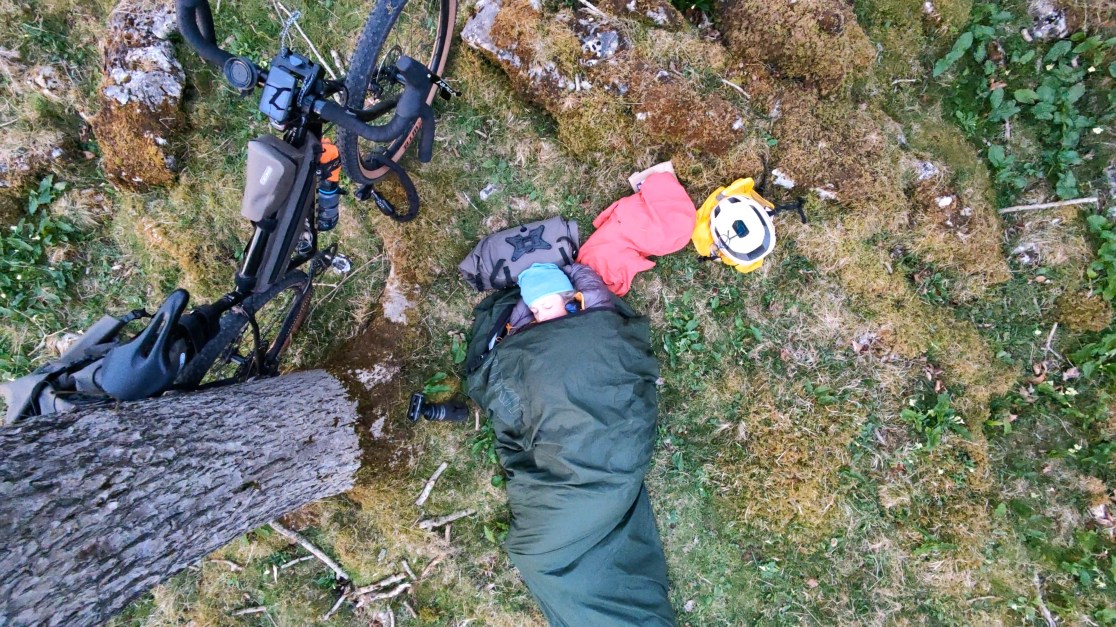
Then onto the bedding roll, which I only expected to pull out at the end of the day:
Alpkit Hunka XL Bivvy + Exped Ultra 5R mat & Schnozzel
I rolled these up inside themselves, all ready to inflate with the mat already inside the bivvy. This meant it took up less space when packed, and also the mat wouldn’t have got wet if it was raining when I set up. I had enough room to wriggle about plenty, as I like to do. I did give the mat an extra couple of breaths in the middle of the night when it had gone a bit soft – possibly down to all the wriggling. The initial set up with the Schnozzel was super easy and quick.
It only rained very lightly and briefly overnight, and there were no bugs around this early in the year. I think one of those hoop bivvy set ups where you can zip yourself in (and the midges out) would be rather useful later in the year, and more comfortable in the rain.
At the end of the pack, at the most accessible part, I put the things I thought I might well need on the trail as the weather changed.
Dakine Women’s Covert gloves
A pair of gloves I’ve had for ever and love very much. I was very glad to have brought them when it got too warm for the Fox gloves.
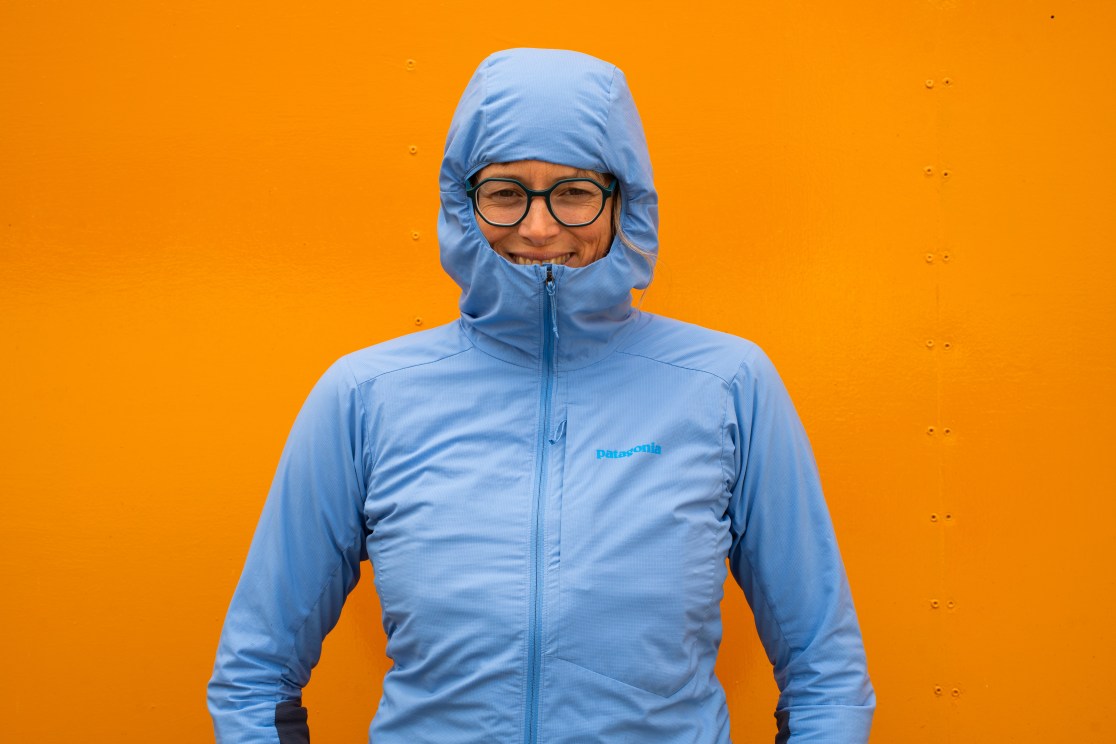

Patagonia Women’s Nano-Air Ultralight jacket
This had only just landed at the office and I hadn’t had chance to use it before. As it turns out, I think it’s rather brilliant. It’s not quite as warm as the likes of a down jacket, but I always find them too hot to actually move around in. This has been specifically designed to be active in, while still providing some insulation. I ended up riding in it over the top of the merino jersey, and then sleeping in it, and then removing the jersey in the middle of the night and just sleeping in the Nano Puff when I got too hot and clammy. I also layered it up with my waterproof jacket over the top when it was really cold first thing, and stuck my gilet over it for some wind protection for a long cold descent. It packs into itself, small enough I could just stuff it into my jersey pocket, and it’s really light. A great last minute addition. Only niggle so far is that I wish it had a two-way zip on the front.
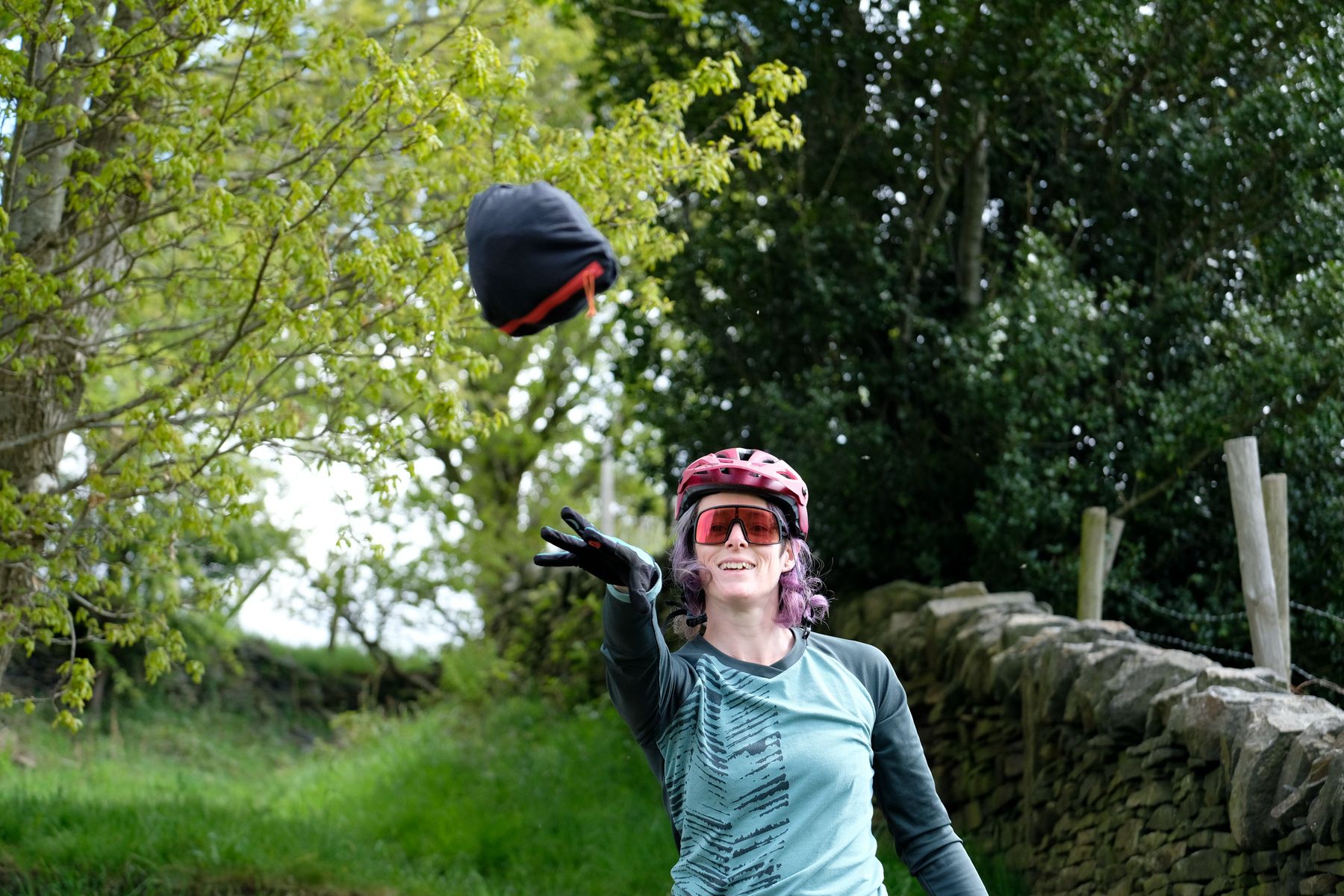
7Mesh Co-pilot waterproof jacket
This is my smallest packing proper waterproof jacket, and I wanted to be equipped with a proper beast should the weather turn monstrous. I only ended up wearing it as an extra layer against the cold and wind rather than the rain, and much of the time it was simply holding my plant into place on my saddle pack. A vital task though.
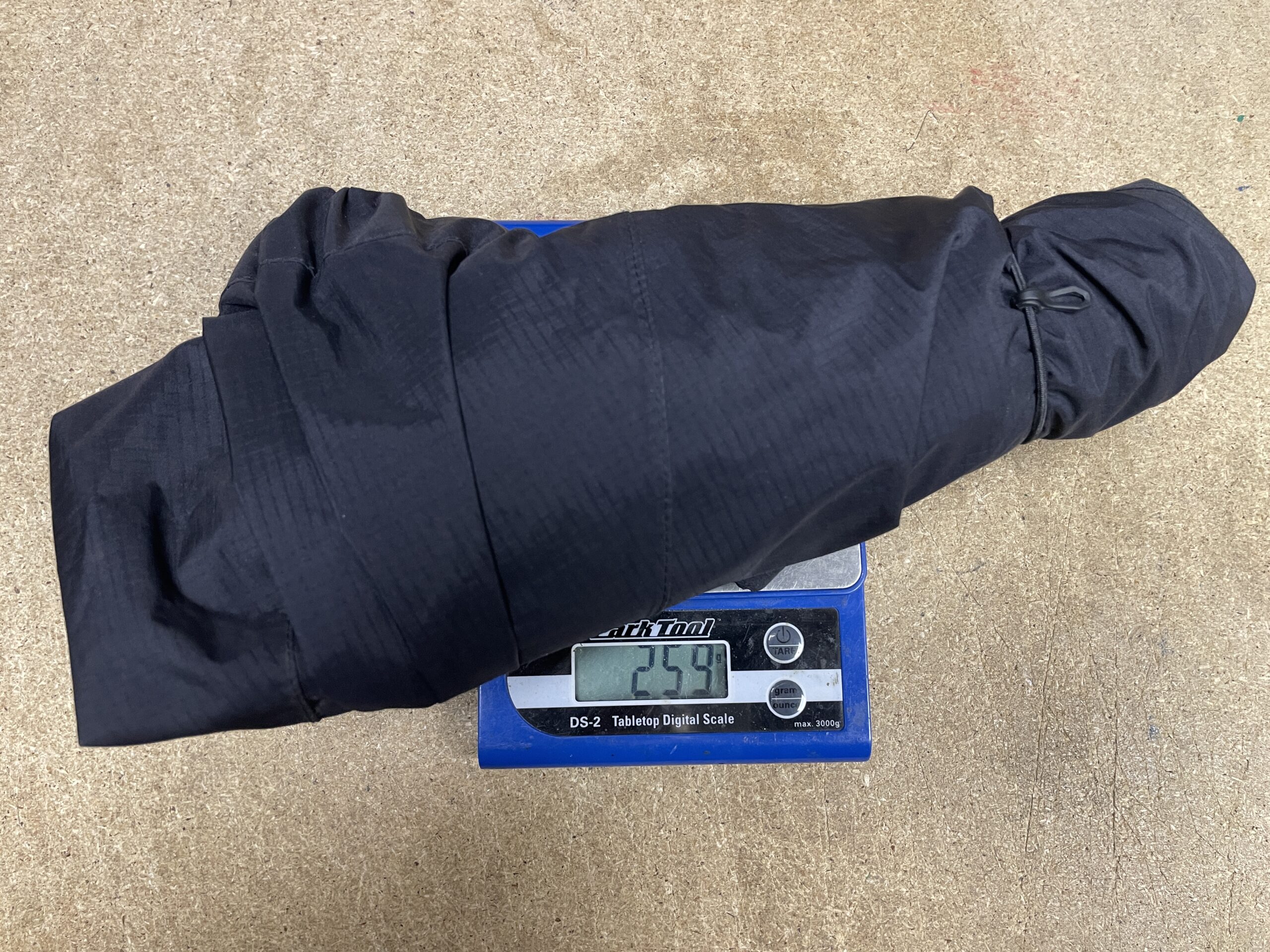
Rab Cinder waterproof trousers
These are my smallest packing and lightest waterproof trousers. They’re really a touch shorter than I’d ideally like in grim weather, but I dodged any of that. Their long side zips make them really easy to put on over everything you’re wearing – including shoes – if you stop for a meal or somewhere you’re sitting outside and shorts aren’t enough. I was very glad of them for the train home – I couldn’t face taking off my shoes and bibs etc to put my leggings on.
Sunglasses and contact lenses
When I set off the forecast was for four days of sunshine. This never materialised, but I didn’t want to end up squinting into the sun and giving myself a headache. Sadly, I broke my preferred frames for photochromic lenses just before I set off, so I packed these as a bit of an emergency option. I was sort of glad not to need sunglasses, as faffing with contact lenses would have been a little tricky in the wind. Even if I’d set off in contacts and sunnies, I’d have needed to take my glasses with me in case of contact lens problems, so it looks like the bulk of a glasses case is pretty unavoidable.
Moon rear light
I looped this rear light into the pack for night time visibility. It also served the purpose of showing me how tightly I’d managed to roll the pack when I set off, giving me a bit of a packing guide on the second day. I once had the front light to go with this, but I seem to have lost it – which is a shame as I would have liked to add a ‘be seen’ light to the front of my pack (although I’m not quite sure where or how I would have hooked it on).
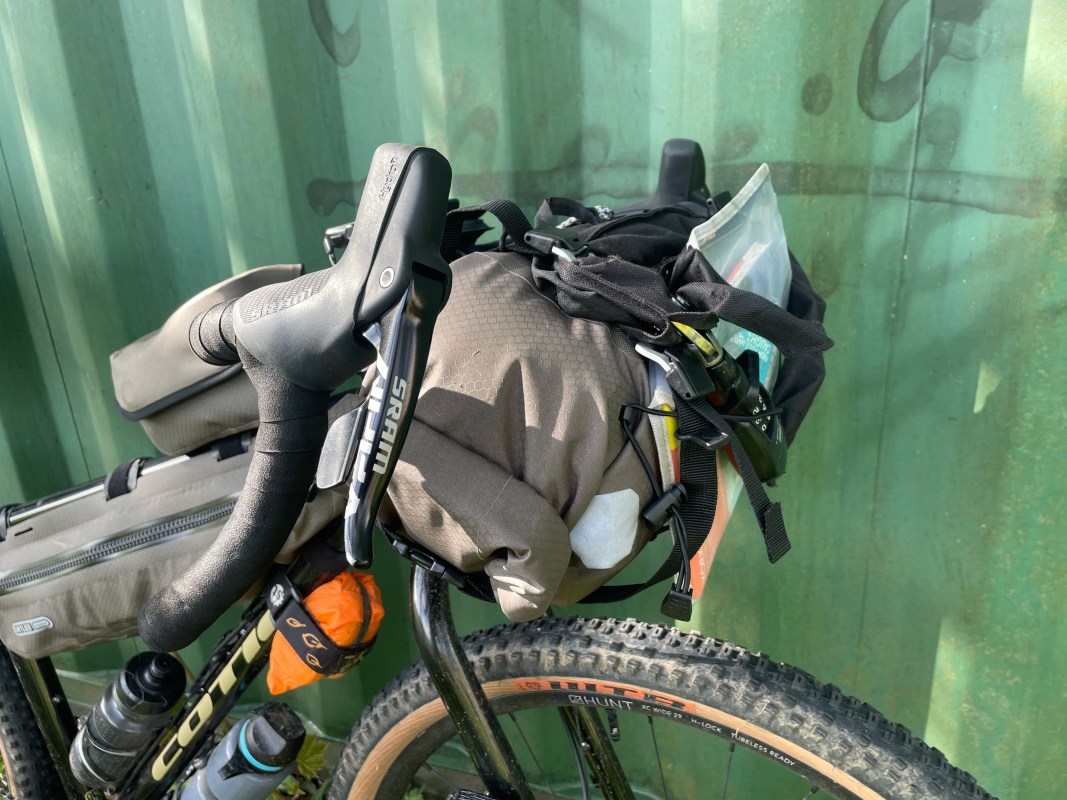
Ortlieb Handlebar Pack-Flex
The name of the game here is stuffing. Stuff, stuff, squash, stuff. Fitting the bag to drop bars meant skipping a lot of the available space that this flexi pack offers – if you have flat bars you’d not have to worry about leaving thumb clearance around the hoods. Like the seat pack, it has a valve, making it easy to compress the contents and get any surplus air out. There is an access on either end of the pack, so in theory you could put a couple of easy access items on the ends and something you won’t need until night (like a sleeping bag) in the middle. I mounted it using the Handlebar Mounting Set QR, which uses para-cord to loop and fasten in place – easy enough to do and the pack clips on and off easily. Note that the Mounting Set QR isn’t compatible with carbon bars. Other mounts are available – compare and contrast them to suit your bars and light set up.
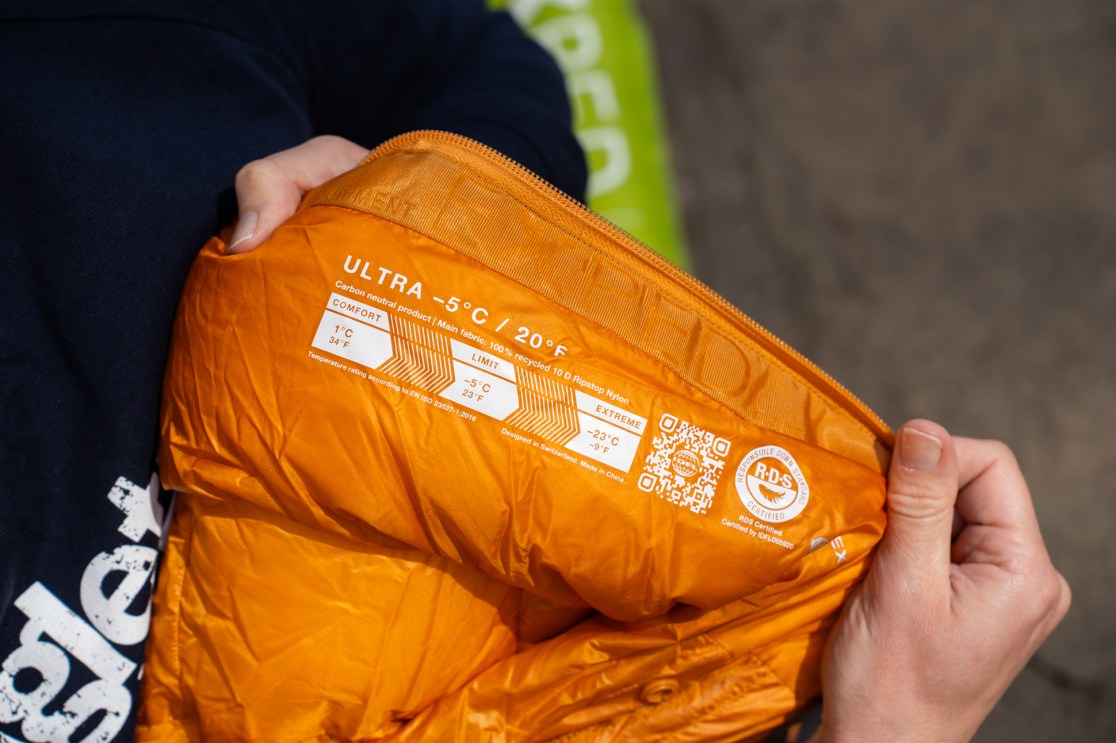
Exped Ultra -5 sleeping bag
Be brutal, really squeeze this in. Skip the dry bag, and just squash it directly into the Flexi Pack, using the valve to release excess air. It’ll go in. And then you’ll pull it out again, stuff it into your bivvy, and dream sweet dreams. It’s very cosy and comfortable. Just luxury to get into at the end of the day. There’s a handy zipped pocket just inside the top too, so if you want to keep your phone in there with you warm (so it doesn’t drain the battery overnight out in the cold, perhaps) you don’t end up with it down by your feet. Easily the nicest sleeping bag I’ve ever used.
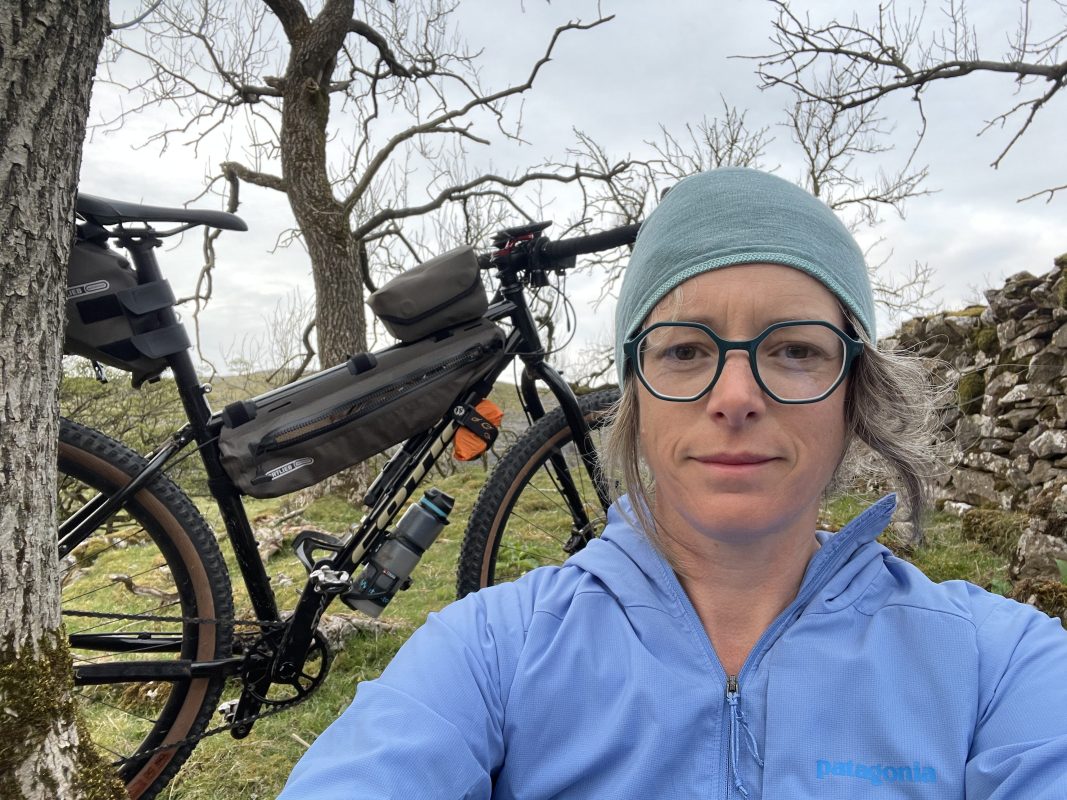
I used the dry bag that the sleeping bag was intended to be in for my sleeping clothes and next day kit…
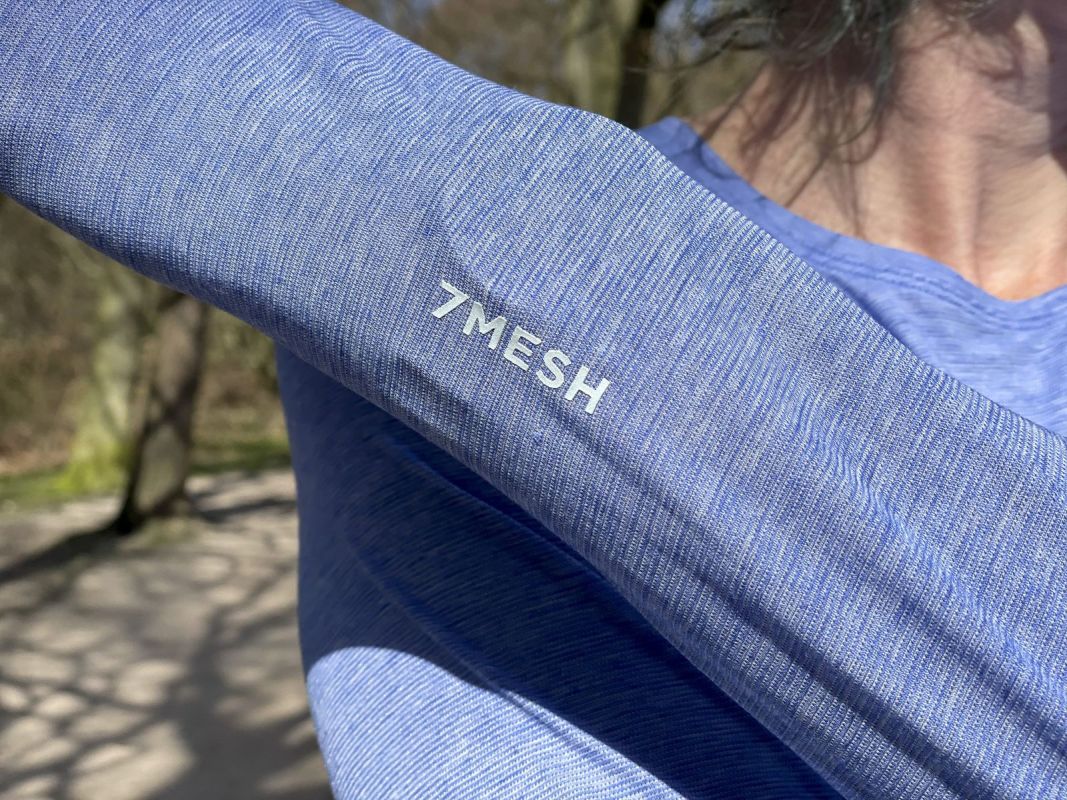
7mesh Elevate Long Sleeve Bike T-Shirt
I intended to sleep in this but then it was so cold as I went to bed that I couldn’t face stripping off, so I didn’t. Had it been warm as forecast the next day, I might well have ridden in this (although I would have lacked rear pockets). A floaty light and versatile top that I’ve been wearing regularly for the last 4 years, I’d probably pack this again.
Ronhill Leggings
I intended to sleep in these, but then I was warm enough without (too warm, even, I woke up in the night and took off a layer). Also, I didn’t really want to force my undercarriage into yet another synthetic environment after a day in the saddle. And they were too tricky to contemplate putting on at the end of the ride for the train home, or for in the pub. Something made of a more natural fabric that was a bit looser would be a better option I think. I probably wouldn’t pack these again.
Buff Merino Lightweight
I packed this to sleep in – I find a head covering is essential for sleeping outside. This is really thin and light, so not as bulky as a hat, and more versatile. It’s also not as sweaty as standard Buffs. The second day was so cold I just kept it on for much of it, sometimes doubling it up with the hood from the Patagonia jersey. Would definitely pack this again.
Socks
I didn’t need these, but I figured if I had got wet feet I would be glad of freshies on the next day.
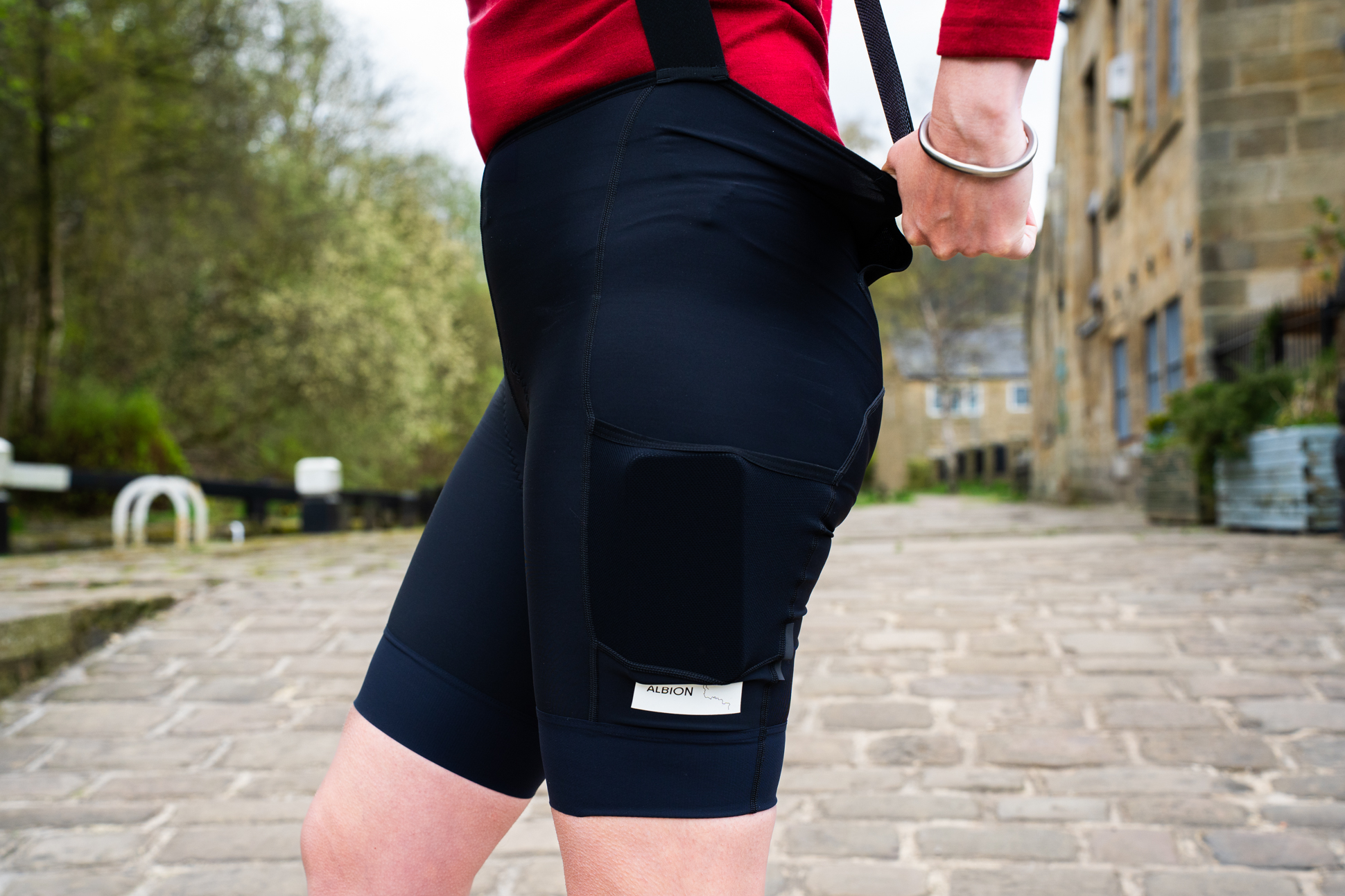
Albion Women’s ABR1 Pocket BibShorts
I hadn’t worn these at all until this ride. I found them a little tricker to wee from then the Castelli, but maybe I’ve just pre-stretched them by now. Watch out for the rear pocket and remove anything you have in it before attempting to pee! The pad was noticeably thicker than the Castelli shorts I wore on the first day, and I suspect this was a big plus for day two. I finished without any undue pain and no saddle sores – a total result in my view. Handy pockets on the thighs were used for my phone and snacks again. I think I’d struggle to swap for anything other than cargo bib-shorts for this kind of ride, they really were just right.
On the outside of the Flexi Pack I rigged up an OS map inside a plastic sleeve. I don’t know where else I could have fitted an OS map, and given I was out of phone signal for a long time and did use it when I (deliberately) left my gpx plot, I was very glad I had it. I’d like to have something a little less cobbled together for this in future, as the plastic sleeve I used did split – no good if it had rained.
I also threaded a HipLok bike lock onto the front. It held in place, but it did jangle a bit annoyingly. I was supposed to have an Abus folding lock, but a mix up meant it wasn’t at the office for me to take with me. I’ll definitely take it next time, probably mounted to my fork. I did try adding the folding lock I have from Hiplok, but it was very heavy and I felt like I could feel it on the fork. Some people suggested I didn’t need to take a lock, but I wanted to be able to go into cafes and places to get food, or to go and explore. As it turned out, with the Hover cam, battery charger, sleeping kit etc I felt like there was too much valuable stuff on my bike that I couldn’t carry with me to go exploring, so I didn’t do much of that. I’d still take a lock next time for cafe and pub stops though, and I’d make sure it was easier to get to – the weaving the Hiplock in and out of the straps in order to stop it rattling was enough of a faff that it put me off stopping in some places.
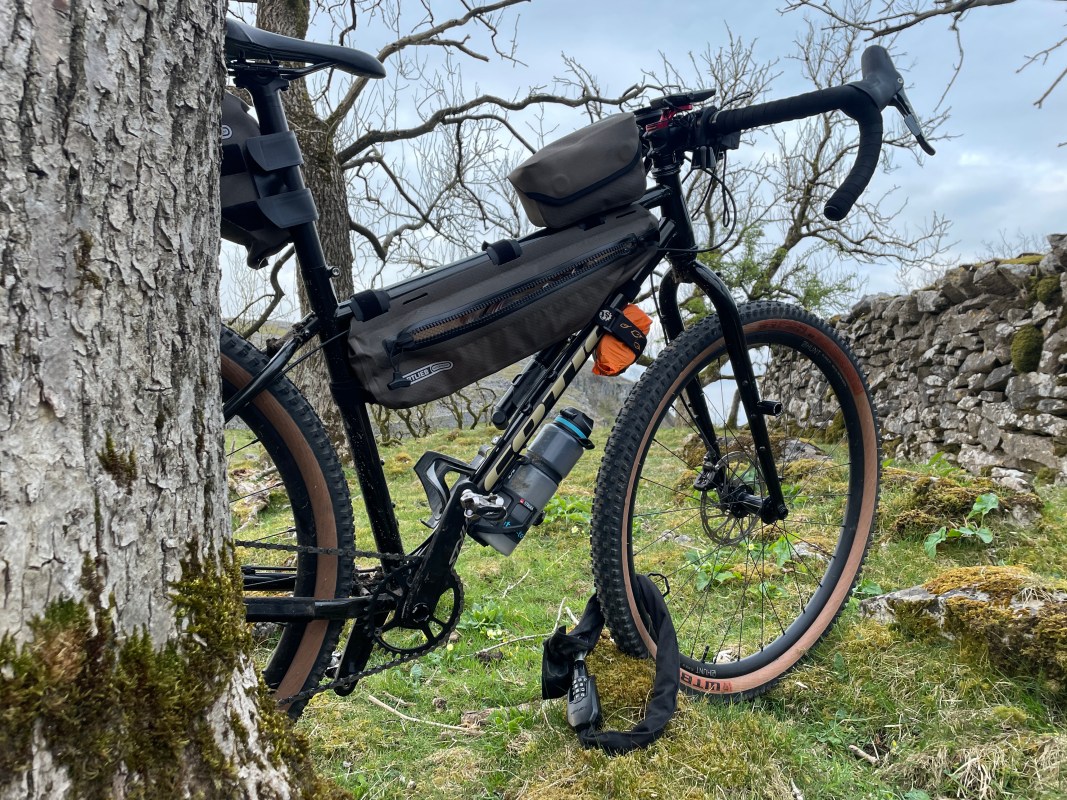
On then to the other bits strapped about my bike:
Nukeproof stem Garmin mount
Borrowed from Amanda, this was needed because the Coros Dura mount was too big and bulky to fit with my set up.
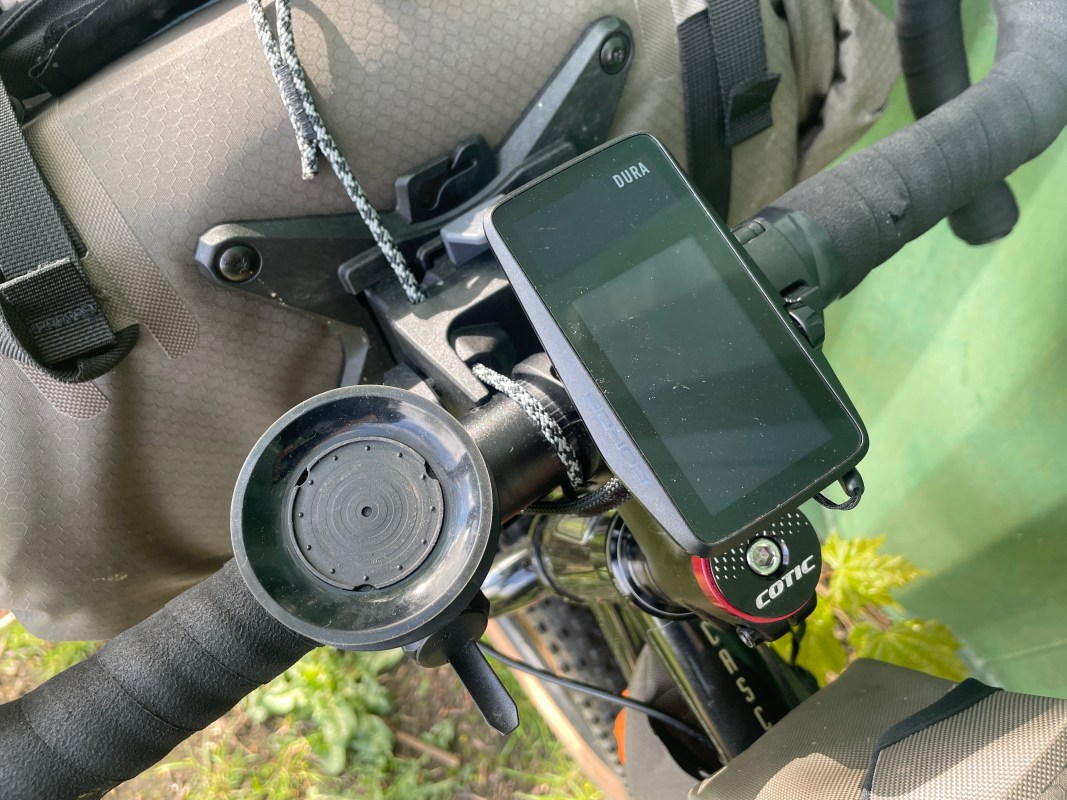
Coros Dura computer
I can’t speak highly enough of this. I generally can’t be bothered with electronic gadgets and apps and so on, but this is great. Simple to use, very clear mapping, useful information. I especially liked the profile, where it would show you how far up a climb you were. Handy for pacing yourself and not being disappointed by false summits. I’m going to have to fiddle with the beep settings a bit though and see if I can turn the volume down. The beeps were rather loud, although I did rather like the victorious trills that it emits when you get back on the route after leaving it, or reach the top of a climb.
Timber Bell
Handy when riding down the National Cycle Network descent into Clapham that is covered in signs warning cyclists to dismount because of the steep and rough descent and dark tunnels.
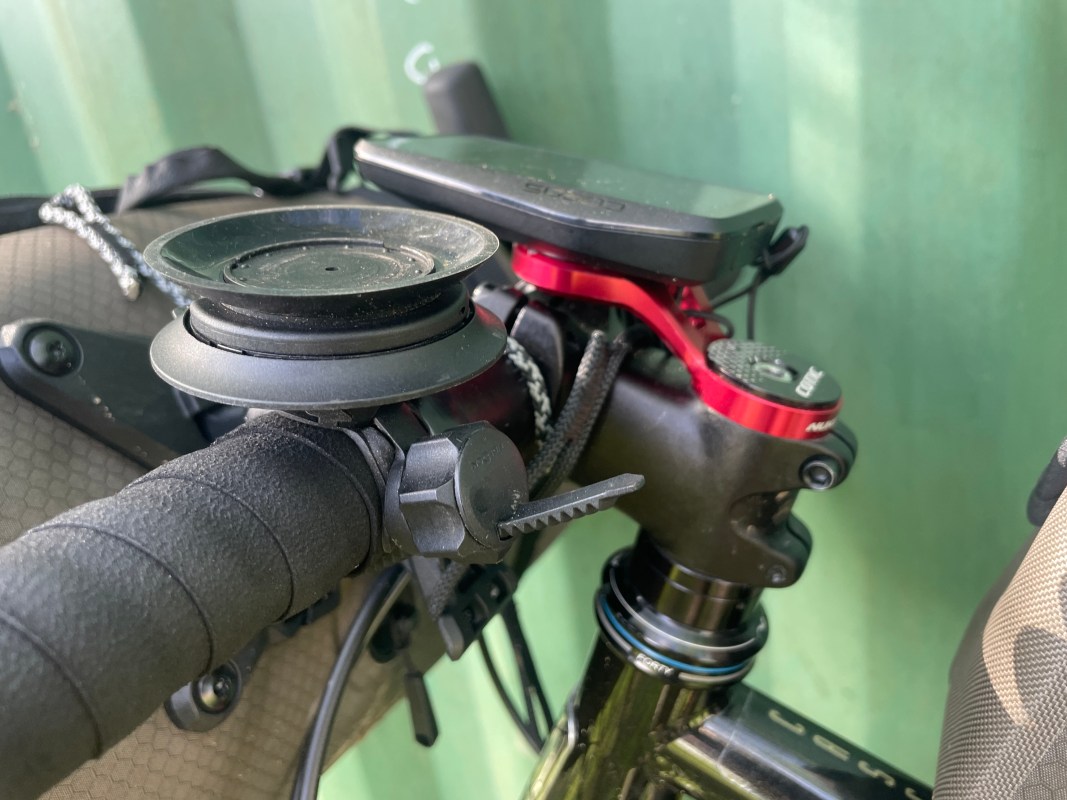
Fidlock phone mount
I really like this Fidlock ecosystem, and having the phone mount was useful when using google maps to take me off route to cafes, or using Siri on the go to listen to messages.
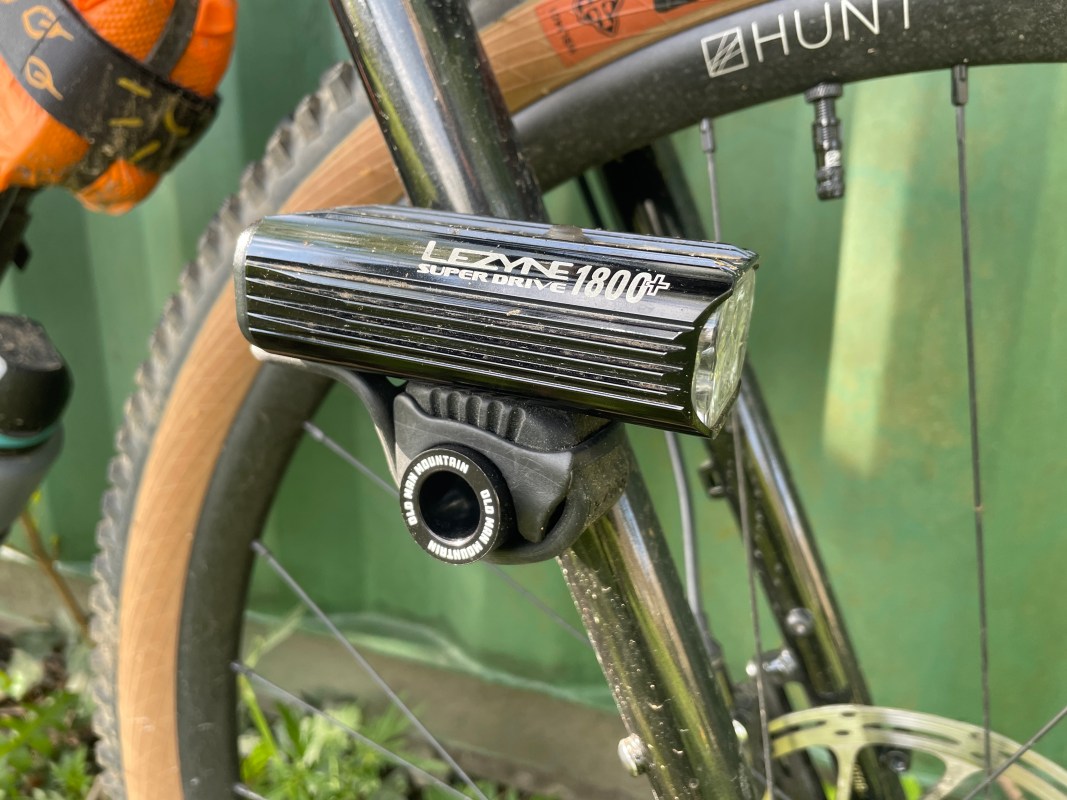
Old Man Mountain adapter + Lezyne 1800+ front light
The bar bag set up I had meant my front light couldn’t ‘see’ over the top of the bars (there’s a different mount option with additional antennae add-on for mounting lights if you don’t have fork bosses). This attached onto the right fork boss meaning I could attach a light just as I would on my handlebars. It does give a rather strong shadow and slightly one sided view, so if you plan on doing a lot of night riding, or much technical stuff, you’ll want a headlamp too.
Having the light so low also made it tricky to look around me. Scouting for a bivvy spot at night was tricky, and I wouldn’t like to ride somewhere more urban without better peripheral vision. On the road around town, I found that I wanted a ‘be seen’ light on the front too, especially for traffic joining from junctions on my left.
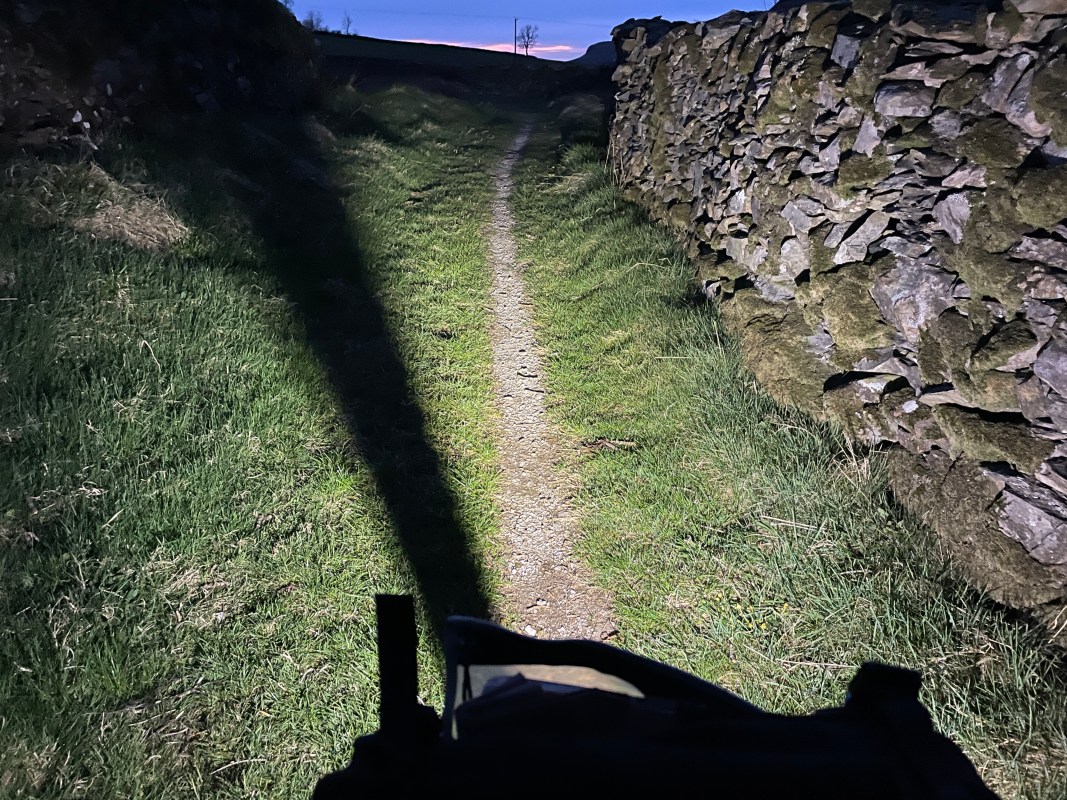
I’ve got bigger Lezyne lights, but this was a great size for fitting on the Old Man Mountain adapter, and gave me enough light for the little bit of night riding I did.
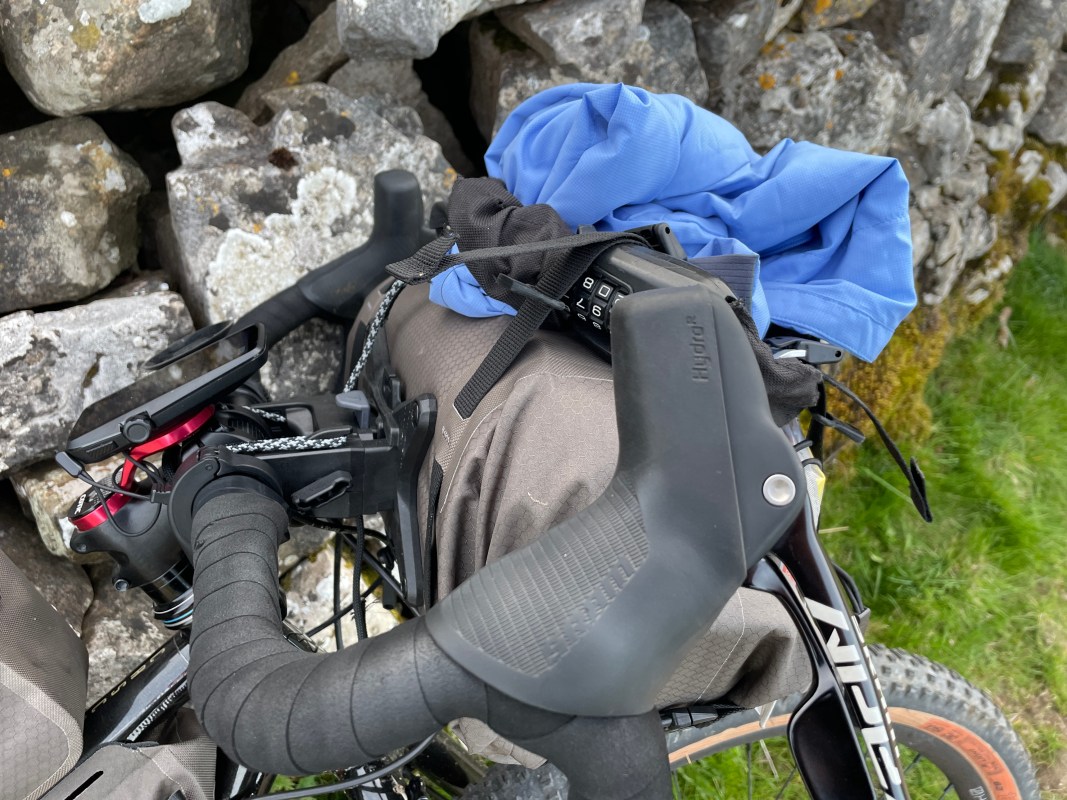
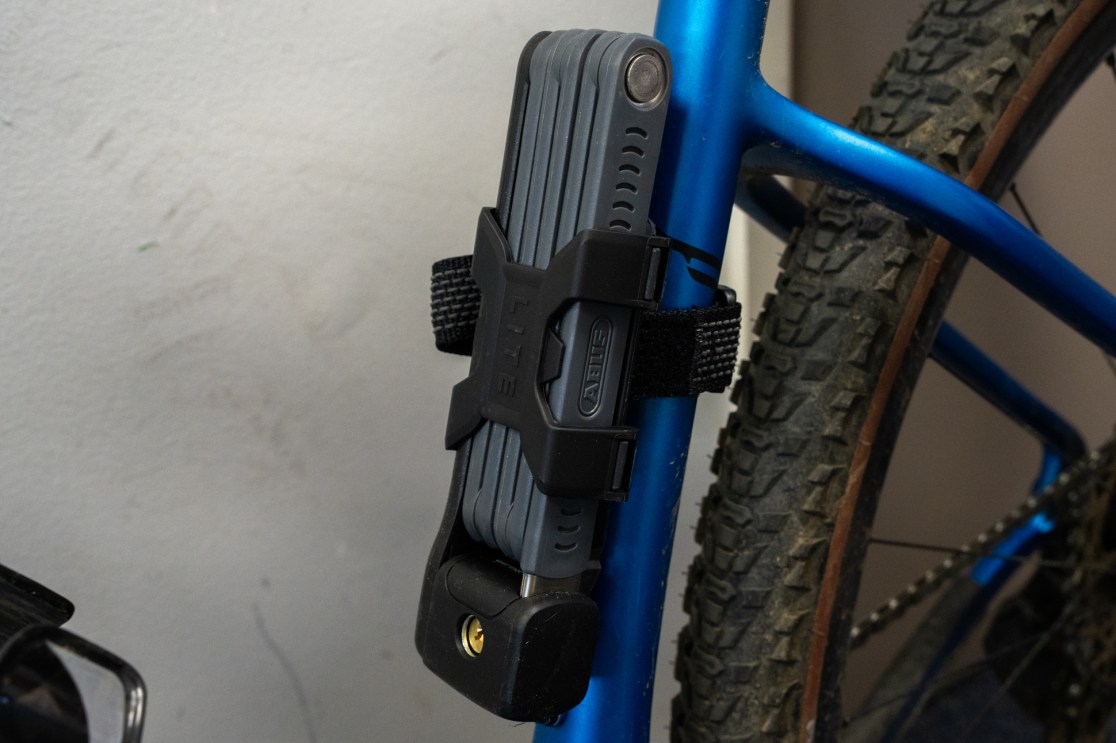
Hiplok Spin lock
As I said, this should have been an Abus Bordo Lite 6055K Folding Lock attached to the frame. Next time it will be, the chain lock was annoying!
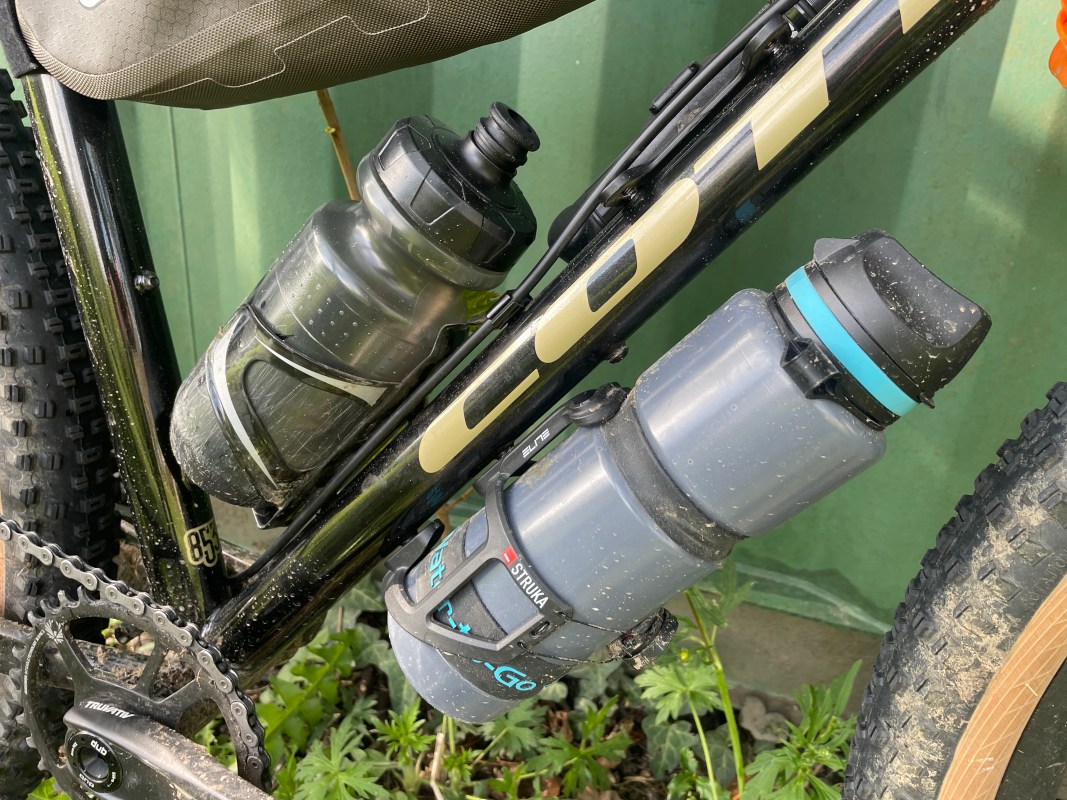
Bottle cage in frame + Bottle for hydration mix
I had this standard bottle cage and bottle for my electrolyte mix. A right hand opening cage would have been better and easier to get out, but this was OK.
Elite Struka Microadjust bottle cage + Water-To-Go Eco 75cl Active bottle
This bottle cage with Boa-like fastener held the bottle in super tightly – I had to loosen it to get the bottle out. The bottle itself has a filter in it, so I could fill up from streams if I wanted to (though it had been so dry I barely saw any water. Camels might be better than horses on the Pennine Bridleway). But having a filter in it meant I figured it wouldn’t be a whole lot of use for electrolyte drink. At one point I squeezed the water I’d collected from a tap of unknown quality from this bottle into my other one, so I could add the drink mix. The filter bottle is just squishy enough to do that, though it does take some effort. I was very glad it had a lid because it was totally covered in shit from the trail – not the most pleasant thing to handle, but without space inside my frame for it I didn’t see any other choice.
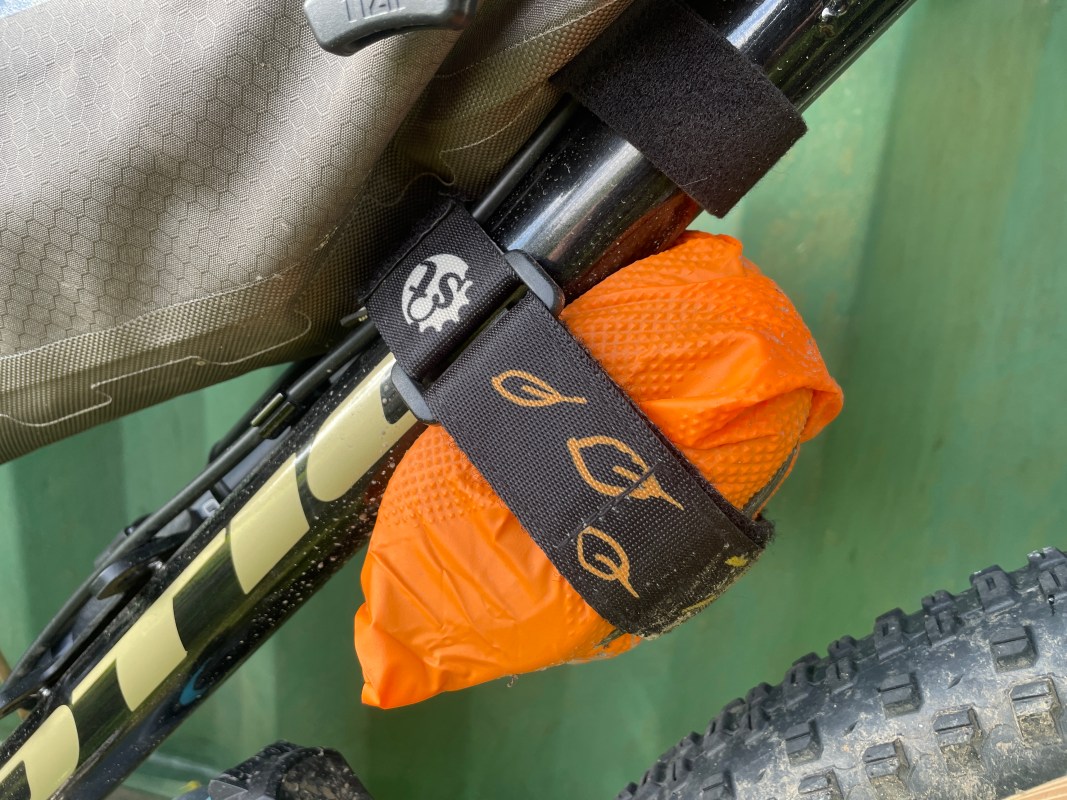
Singletrack Rock Band + Workshop gloves & inner tube
I needed to carry an inner tube, wrapping it in workshop gloves meant it was protected, and if I got really cold hands in the rain I had a waterproof emergency option. Strapped it on, left it there, never needed to adjust it.
One Up Pump and EDC
The quiver killer of tools in my opinion. Usually I have it mounted alongside a bottle, but I felt like clearance for a bit tight for my feet to put it lower down, and there wasn’t room for the bottle higher up because of the frame bag. Really need to find a tubeless repair whatsit to fit in here to make this the perfect do-everything tool.
Fizik Saddle
I put this on because I know I like this saddle. After two days on it without any pains, I still like it. It’s a bit unfashionably long in the nose, however, and I’m pretty sure they’ve discontinued it. So I best start searching for something of similar flat/cut out shape and width before this gives up. I imagine that the saddle bag has put it under a bit of extra strain to usual.
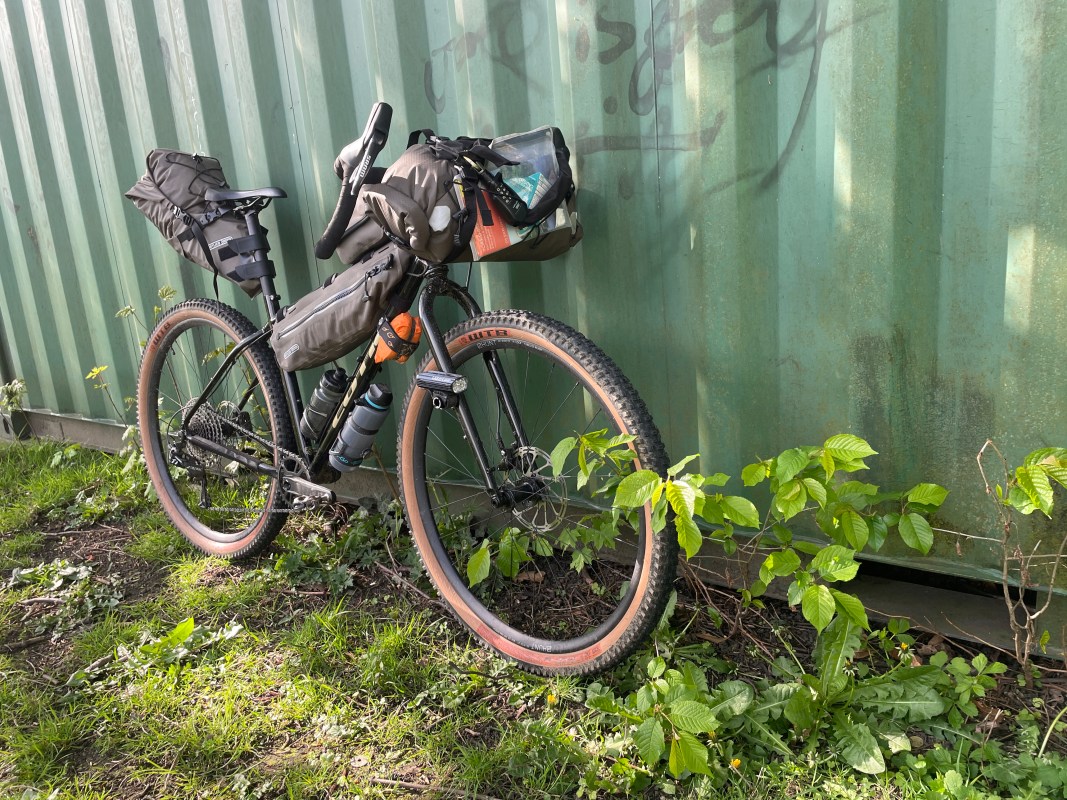
Things I didn’t take, but would consider for future:
- Lip balm – my lips were the most painful thing about me after my ride. I’ll not forget again.
- Pen knife -I didn’t need it, but I should have taken one for emergency fettling and sausage slicing.
- Spork – I didn’t need it, but had I gone for a takeaway meal I might have been glad of it, and in extremis it might have allowed me to eat beans from a tin.
- 3-pin plug – This would have been handy for poaching power from cafes etc. One with neat fold down prongs would be best.
- Bikini Bottoms – I half wished I’d packed some bikini bottoms. I didn’t want to go for a dip in my bib shorts and end up with a chafing chamois. A pair of cotton or bamboo swimming bottoms could double up as sleep wear too. (Heads online in search of such things…)
All in all, for a first go at a packing list I think I did not too badly. I felt prepared for whatever the weather might do, but not totally laden down. What do you think? As ever, leave a comment below.
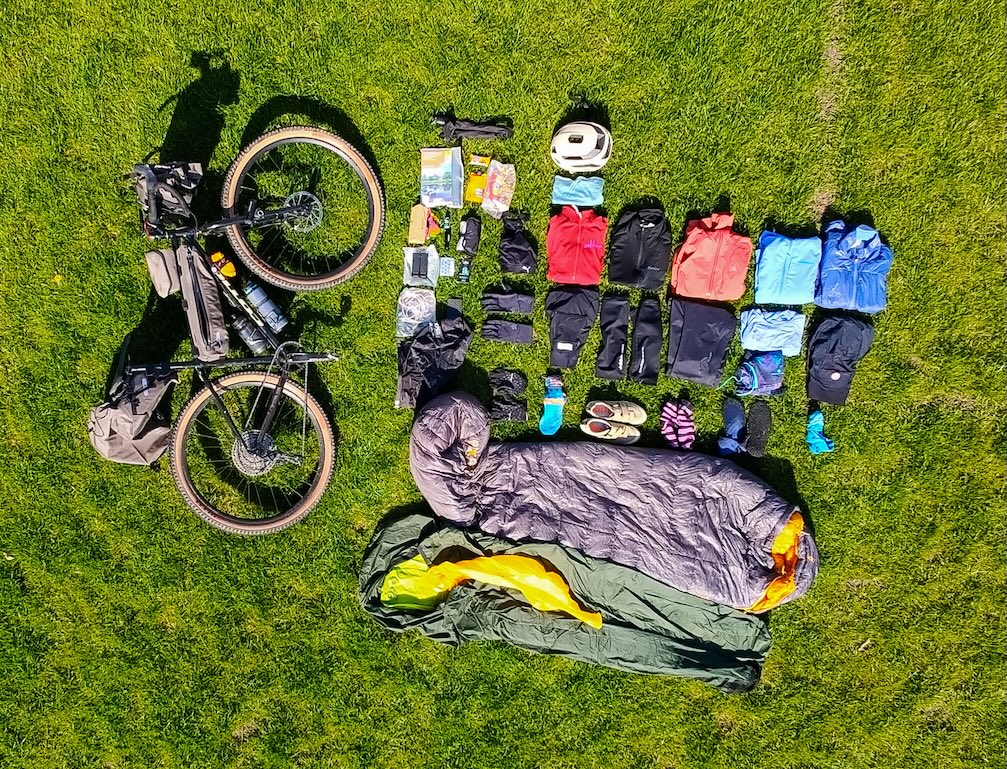





Great article, really informative.
It *is* a lot of kit mind… maybe its having it all itemized… I took pliers on my last jaunt and those aren’t on this list…
I may be a little cynical, but you seem to be carrying enough kit to survive some sort of bikepacking nuclear holocaust – is it a very, very long night you’re thinking of? It’s also almost as if you’re quickly name-checking a whole load of test kit that you’ve not got round to properly reviewing – told you I was cynical. There also appear to be two lightweight insulated jackets, albeit with slightly different properties, which seems excessive.Otherwise, using bivi bags in a lot of UK conditions is pretty grim ime. Particularly when you get into the whole Houdini-like contortions needed to extricate yourself and sleeping bag, clothes etc without getting soaked, I’d rather carry some sort of ultralight tent or at least a hooped bivi and reduce the grimness. Mind you we’re not exactly experiencing classic UK weather atm, so what do I know.
Also, if you insist on using a bivi bag, you may be better off with a lightweight synthetic sleeping bag – MHW Lamina or similar – rather than a down one unless your bivi admin is very good / it never rains very hard – you believe fervently in hydrophobic down.
More generally, the thing about critiquing lightweight kit is that half of it is knowing how to use it to maximise performance plus different people have wildly differing takes on what’s an acceptable level of comfort / utility etc. Personally I’d ditch a bunch of your stuff and swap in a very light tent. Cutting the weight means you’ll probably enjoy the actual riding more, but that’s just my take, YMMV.
@badlywireddog the forecast (Easter holidays) was somewhat variable and I was committed to the dates, so I packed for getting soaked to the skin (but hoped it wouldn’t happen). I was also going through pretty remote terrain, and my fell running background kicked in – I prefer to be prepared to stop because I have a problem or I need to help someone else with one. I honestly don’t think I had more than 1kg of things I didn’t use. I’ve definitely got more bodylard than that on board already 🙂
I would 100% love a little mini tent but sadly I don’t have one and couldn’t get one in to test in the time available. I already owned the bivvy. I don’t mind it at all for comfort/wriggling, but in the rain or with bugs about I’d much prefer a tent.
@ajt I should have had pliers – they’re on the penknife that I forgot!
Im a bit with BWD here. all that electronic stuff? its always a weight / comfort balance as well.
It always amazes me how much I take for a 2 day, and then barely anything else for a 2 month! It’s always the way……
I love a night under the stars in a bivy bag but I would personally never head out with just a bivy bag if there was a chance of more than a few drops of rain. I’d sacrifice a bunch of that clothing and virtually all the electronics for a tarp or tent.
Everyone’s take on this stuff is different though. The important thing is to get out there.
@tjagain the electronic stuff was largely because I absolutely had to get a magazine feature out of the trip! If photography didn’t matter it would take the pressure off having electronics that worked, had memory for photos etc.
Oh, and I forgot: I packed for two nights in case I missed the last train back (or just wanted the time to go a bit further).
Just spotted. No cooking stuff? No coffee in the morning?
….which reminds me of a few ‘ultralight’ nights where I woke up with a slug on my lips! Not quite the way I was hoping to wake up. It’s only happened twice, but cold memories seem to stick for some reason. 😱
Some of them are ridiculous in price. I’m lucky to have a few (you’re welcome to test them). I think that good quality outdoor stuff needs to be a bit more accessible – it’s been a while since I was shopping for the best all round option, but maybe that could be a feature?
Now that’s a must! A cold-blooded animal like myself requires a hot brew in order to get moving. How did you cope?For one or two nights, I really like meths because it’s so light and packable.
Toothbrush, cut down or folding. And I got a load of small toothpaste samples from the dentist. One is Big enough for a weeks camping
I prefer coffee but each to their own
Anyway, good luck with your new direction, hope it all goes great for you 🙂
I’m with you on the toothpaste samples, but cutting down the actual toothbrush feels like one of those weird, performative things that people do, which in reality saves a couple of grammes of plastic, but makes brushing your teeth unnecessarily more fiddly. See also ultra-lightweight stoves made from coke cans, weird sleeping mats that only support tiny protuberances at the expense of any sort of comfort and minimalist down blankets that are ultimately less efficient in use than an equivalent sleeping bag because, hey, they have no hood. Fine if you’re racing and every gramme counts, but for more general lightweight use, it always feels like the gramme counting has become more important than the journey to me, obviously YMMV and some people love the whole shaving grammes from everything process as an end in its own right. For me, it makes a lot more sense to think about the big items when it comes to saving weight – shelter, bag, mat, stove, fuel and food, food, food in particular.
It’s weird. Unless I know the weather is 100% going to be dry and mild, my 1 night bikepacking kit is the same as my multi day kit, I just omit the waterproofs and warmer layers.
An old, learned habit of mine is a wet dry routine. I have my daytime riding kit and then a clean pair of gym shorts and a base layer for the evening/sleeping. I know for 1 night, it might seem unnecessary to have clean kit to get in to, but it does help me sleep well and wake up fresh.
I’ve also stopped taking any cooking kit. Croissants/pan au chocolat can be compressed into tiny balls and the cold cans of coffee are quite nice. 😆
+1 on this. It is amazing how fast things can go from “fine" to “uh-oh" even in not-particular remote places. Or, for instance, if someone you’re riding with has a mechanical – or medical incident – and now you’re standing around, getting cold yourself, and that can also put you in jeopardy. Space blanket, one more layer. (This does vary a bit depending on where you’re going, but on a recent Cairngorms trip I definitely used all the layers way more often than I was planning).
The other thing that can be hard when reading about other people’s packlists, and going “am I packing too much?" is remembering where they’re riding; warm, non-changeable weather can make a huge difference in knowing what you can leave behind. (See: everybody on bikepacking dot com with tiny kit lists for warm climates). The other way to run light is to accept a certain amount of discomfort is going to be involved, and working out what you will and won’t compromise on; what your non-negotiables are, and where you can suffer a bit.
Sounds very sensible, but also – nothing wrong with a bit of luxury. (My two luxury items: pyjama trousers, a Kindle). Not sleeping in riding kit – and ideally, swapping out of it once at camp into something loose/wooly hat/down jacket) – make such a difference to comfort, and for me, means I rest better. Some people appear to be able to rest properly in a hedgerow, though!
Did you sleep well? If yes, good kit list : )
Perhaps the mistake there is treating a bivi bag as a military or mountaineering survival bag, which it may be if you’re really unlucky but if not a real emergency, if you’re bike touring with a bivi and you end up inside the bivi trying to change clothes as it pours down you’ve made a load of bad choices to get there.. Bivis are wonderful in good weather and if the weather’s looking iffy find a church doorway, cricket pavilion, bus stop etc. ‘Found shelter’ – a nose for those kind of spots is a good thing to develop. I’d take a small tarp as back up normally. I’ve ridden across France a couple of times with just a bivi and once toured round Wales for a week that way, it was light and simple but I did end up in some interesting and memorable spots. Which is part of the appeal tbh.
On the lightweight gram-counting approach, I used to do that. 3/4 mat, 280g down quilt, 180g sleeping bag cover as a bivi bag, pro-plus instead of coffee making kit etc. Not so comfortable but I was over a decade younger and with well under 4kgs tucked onto my bike it was eye-opening to realise how far you can go in 4-5 days w/o getting into all-nighter sleep deprivation stuff. Also good to realise how little you really do need – I add a kilo or 2 for comfort now and it’s still a light pack list.
A small tarp (I got mine second hand years back, £25) can make the difference between a decent night and an endurance test if the weather comes in. Tuesday this week case in point. Use landscape features to your benefit. I use a Snugpak bivi bag with a chest zip, easier to get in/out, but I’m sceptical about just how waterproof/breathable it is (as I was with a Hunka XL I used to have). I wouldn’t inflict either on a down sleeping bag.
Same here – a complete toothbrush takes barely any more space than half a brush. I found a tip about using contact lens holders to carry enough toothpaste for a night or two, and it works for me, although I have almost put my contact lenses into the wrong container!
A Kindle, phone and Airpods can provide all my entertainment for a normal week’s holiday so always go with me on a bikepacking trip.
Not even read the article but saw the pic and that was my first thought. I’m on the verge of buying some kit to do some bike packing – just big ride, 1 night in a camp site, ride home sort of stuff but theres about 10x as much kit in that picture than what I was planning on taking…